even better when your deck shelters you from prying eyes. Over the past two seasons, outdoor-living pros have pushed privacy walls beyond the basic fence, pairing smart materials with wellness-driven design so families can lounge, dine, and entertain in comfort. Whether you value eco-friendly finishes, flexible layouts, or year-round durability, today’s options make it simple to match form with function. Ready to turn that exposed platform into a secluded retreat? Dive into twenty fresh, practical takes that elevate any deck by adding a handsome privacy wall—each one packed with tips you can start planning this weekend.
1. Slatted Wood Privacy Wall for Airy Seclusion
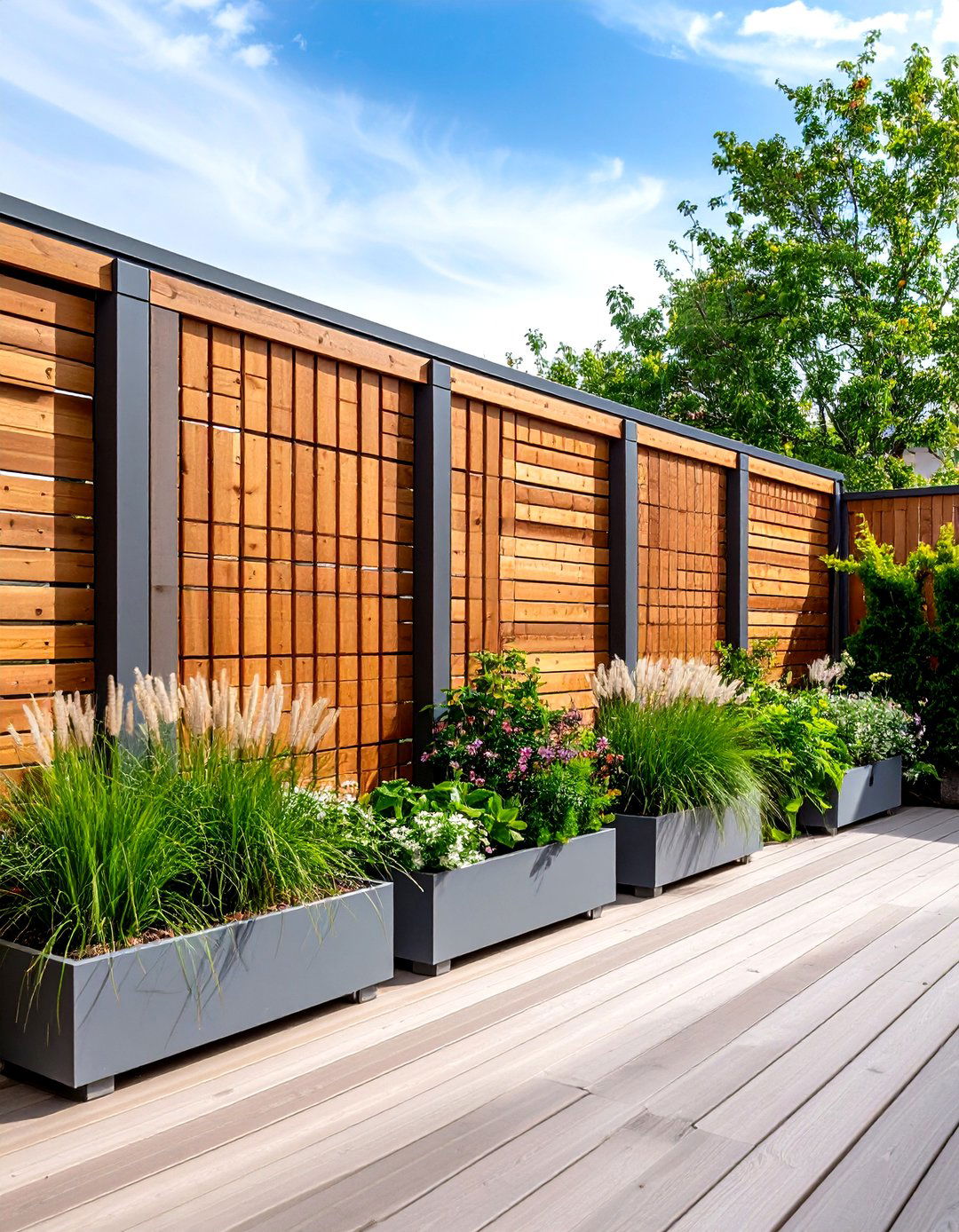
A gently spaced cedar-slat privacy wall lets your deck breathe while still obscuring neighboring windows. Start by fastening 1×4 boards horizontally between pressure-treated posts; keep gaps under an inch to balance airflow and coverage. A semi-transparent stain protects the grain and harmonizes with modern composite planks. Because slatted designs weigh less than solid panels, you can usually stay within standard guard-rail load limits while hitting the 6-foot maximum height many jurisdictions allow for deck screen walls. Finish with tall ornamental grasses in planters to soften lines without compromising sight-line control. The Deck Store Code Library
2. Living Green Wall Deck Privacy for Lush Ambience

Imagine swapping plain boards for a vertical garden that muffles noise and cleans the air. Modular planter panels anchor to your deck’s railing posts, then house trailing ivy, ferns, or flowering herbs. Drip-irrigation kits tuck behind the greenery, keeping upkeep low while plants weave a dense natural curtain. Designers note that living walls tie into the broader trend of wellness-focused outdoor rooms, offering visual calm plus a subtle temperature drop through evapotranspiration. Choose lightweight soil substitutes and keep overall saturated weight within your deck’s load rating before installation for safety. Bend Magazine Architectural Digest
3. Composite Panel Privacy Wall for Low-Maintenance Ease
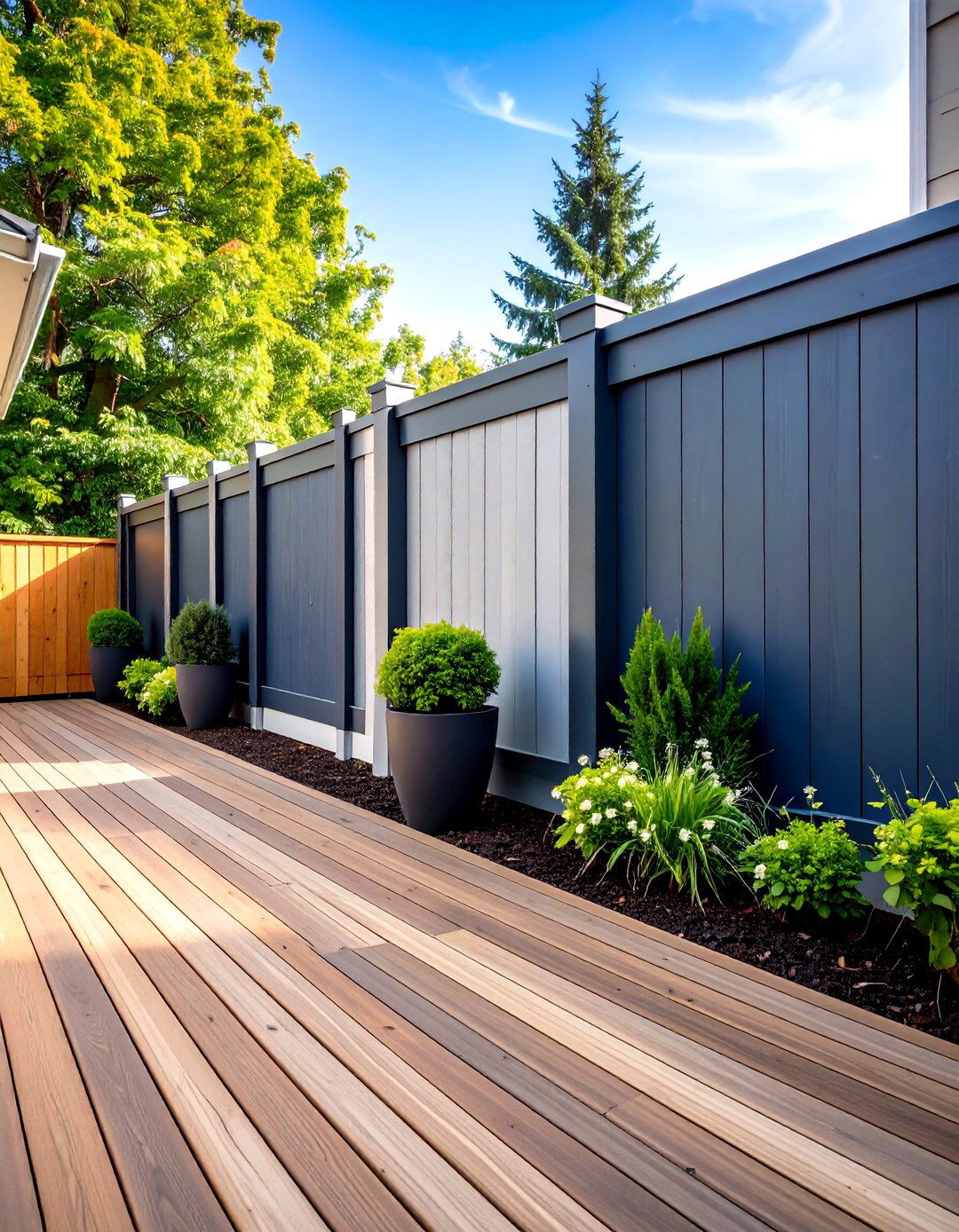
For homeowners who’d rather relax than repaint, composite privacy wall panels share the fade-resistant pigments and capped surfaces of today’s best deck boards. Interlocking tongue-and-groove edges create a gap-free barrier that shrugs off moisture, insects, and UV rays. Because composites often incorporate recycled plastics and wood fibers, they align with sustainability trends dominating 2025 decks. Match the panel color to your decking for a seamless look, or contrast with a lighter trim to frame built-in seating. Just confirm manufacturer span ratings so posts are spaced correctly to handle wind loads. Rocky Mountain Forest Products
4. Louvered Metal Screens with Adjustable Control
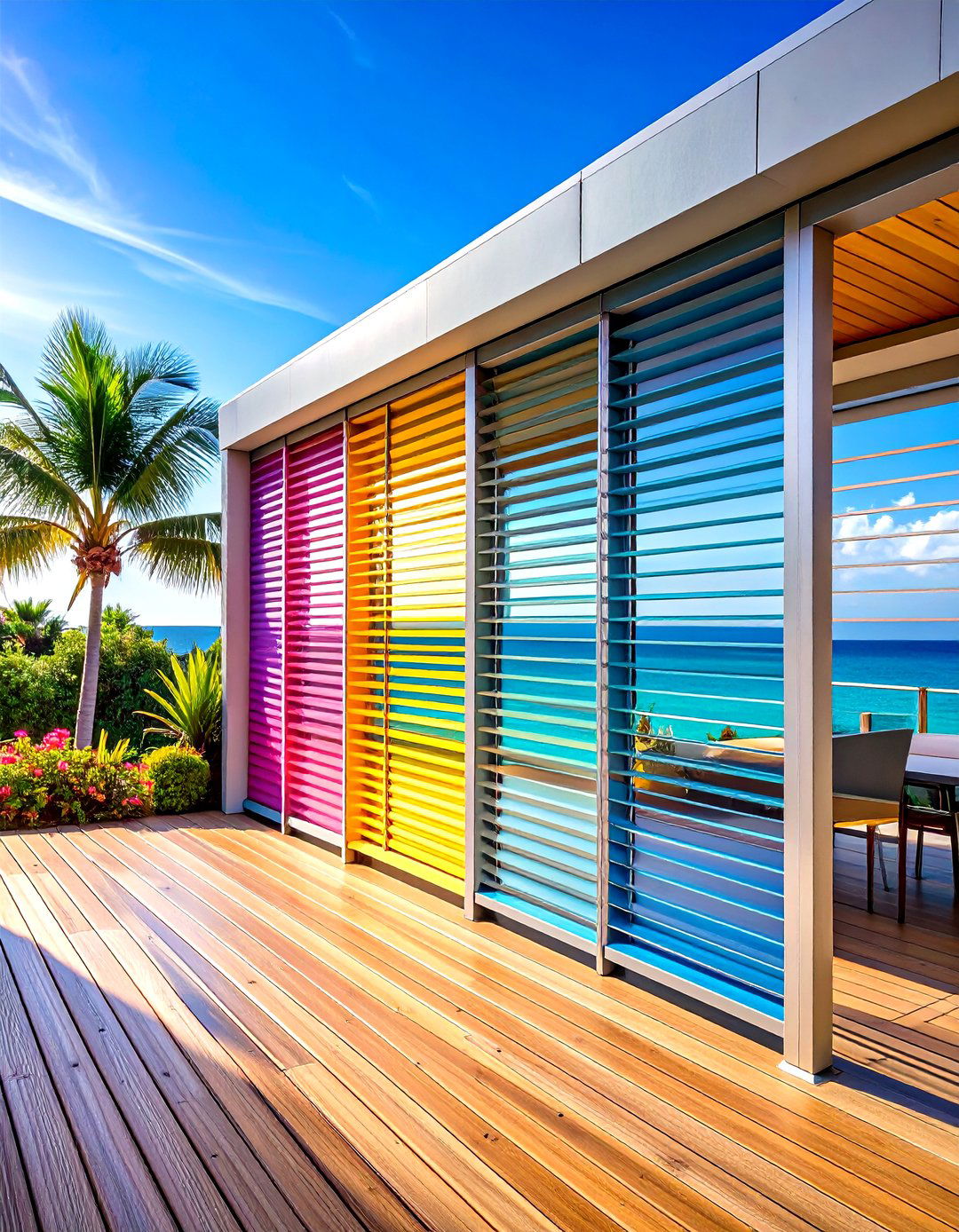
Aluminum louver systems borrow from high-end pergolas, giving you fingertip control over sun and sight lines. Motorized or manual blades rotate up to 90°, blocking direct glare during dinner and opening wide for star-gazing later. Powder-coated frames resist corrosion, making them ideal for coastal decks. When louvers are closed, they double as a rain shield, so furniture stays dry. Check that mounting brackets align with joists or blocking beneath the deck surface to distribute the extra torque produced by moving parts. Rocky Mountain Forest Products
5. Frosted Glass Panels for Light and Privacy

If your deck craves daylight but needs screening, frosted or sand-blasted glass panels solve both issues. Tempered safety glass meets guard-rail code for impact resistance while diffusing harsh sun into a soft glow. Use black or stainless steel clamps on 4×4 posts for a minimalist aesthetic that pairs well with contemporary railings. Keep panels no taller than local six-foot limits, and leave a half-inch expansion gap at post edges to prevent stress cracks during seasonal shifts. A quick wipe with mild soap keeps the view cloud-free. Trex Company, Inc
6. Horizontal Cedar Boards for Modern Warmth
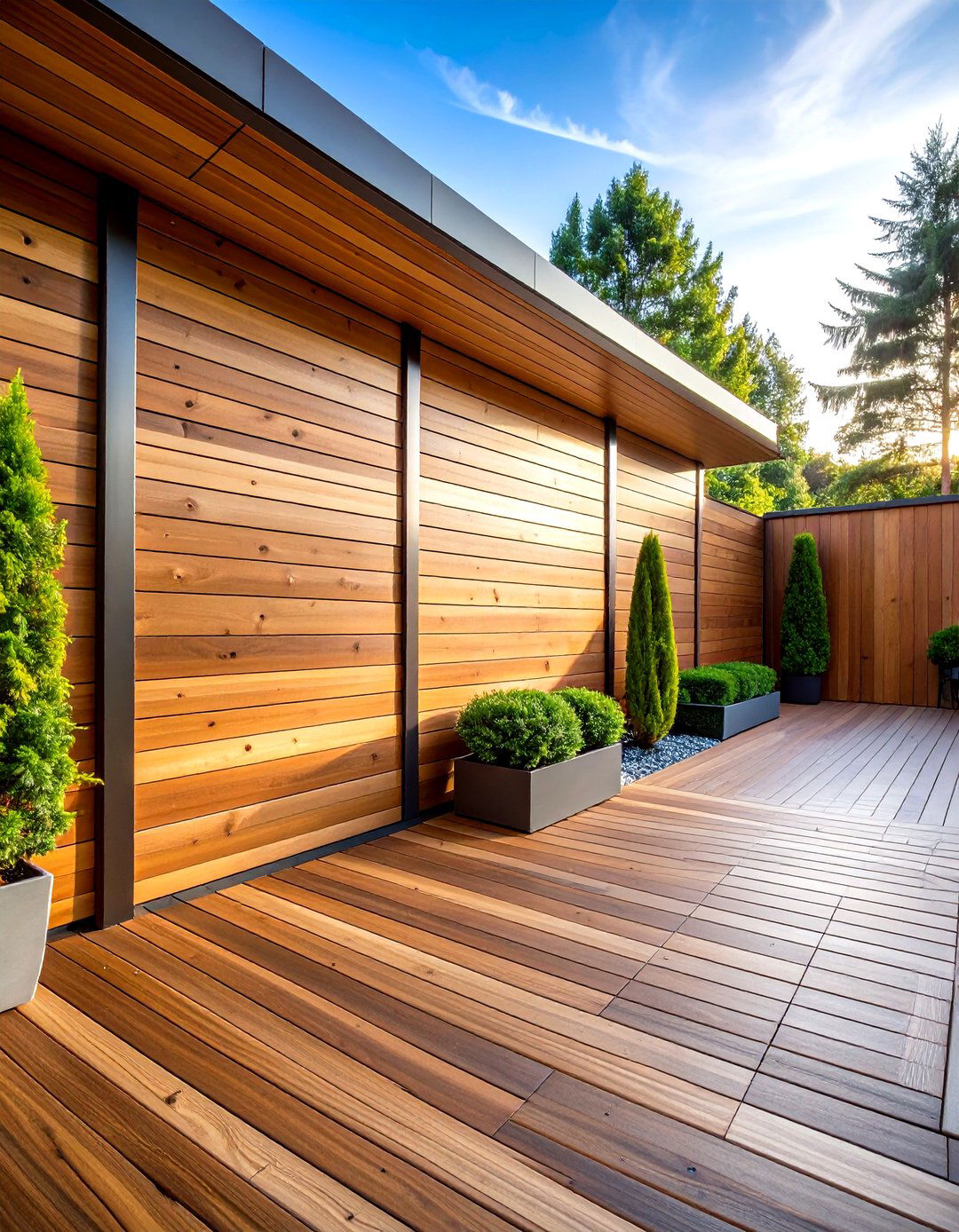
Bold, continuous cedar boards running the full length of your privacy wall create a warm, linear statement. Choose kiln-dried 1×6 or 1×8 planks for stability and stagger seams like flooring for strength. Apply a UV-blocking oil finish annually to hold the rich honey tone; otherwise, boards age into a silvery patina that still complements composite decking. Because cedar is lightweight yet sturdy, it’s perfect for rooftop decks where structural loads matter. Remember stainless screws to avoid streaking.
7. Mixed Stone-and-Timber Privacy Wall Statement
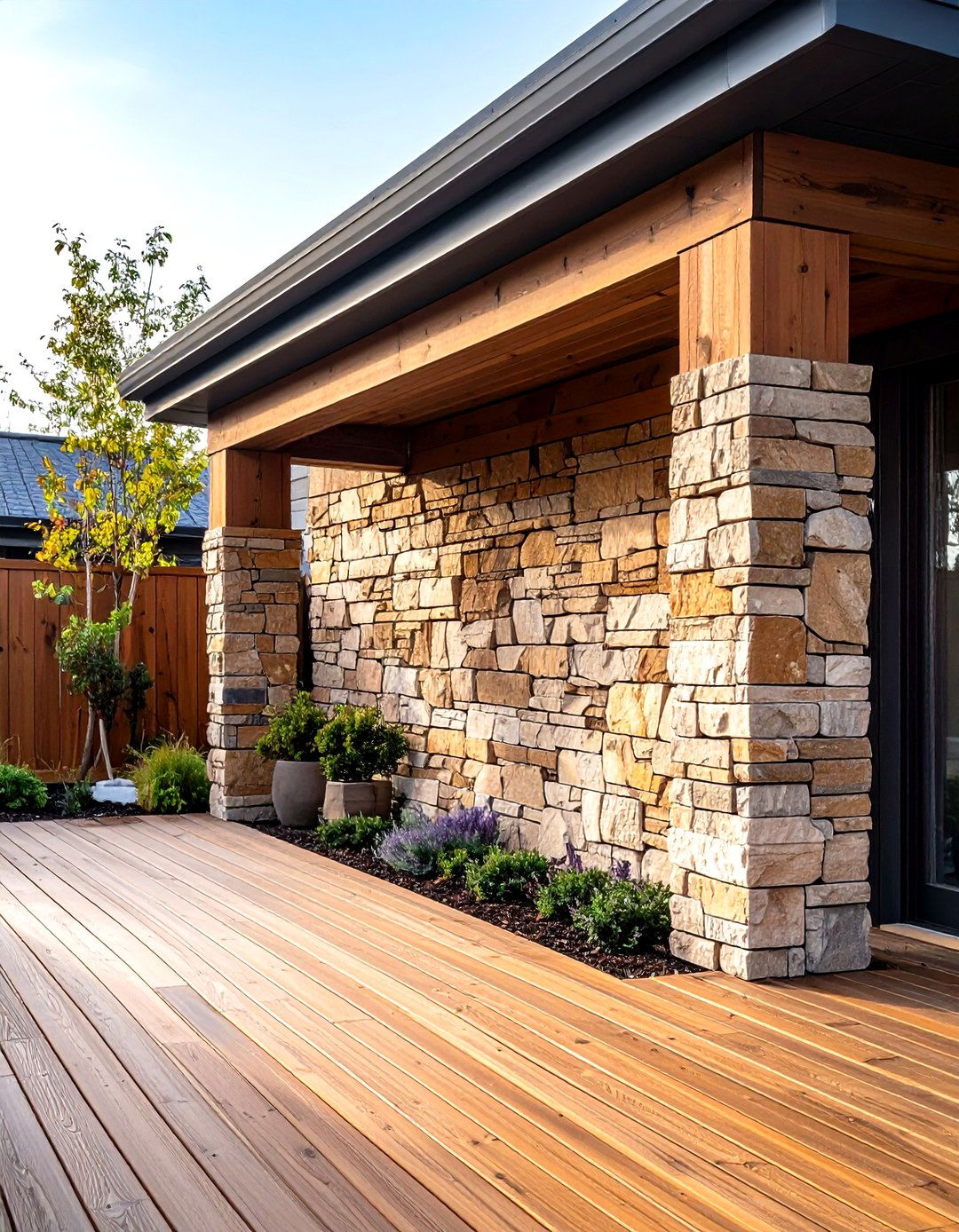
Combine stacked stone veneer columns with stained timber infills to turn your deck privacy wall into a focal point. The stone anchors add mass that visually grounds elevated decks, while wood panels soften and warm the look. Use galvanized steel post anchors bolted to framing, then wrap posts in cultured stone for reduced weight versus full-depth masonry. This hybrid approach also dampens street noise, creating a cocoon-like atmosphere for dining al fresco.
8. Retractable Fabric Screens with Pergola Integration
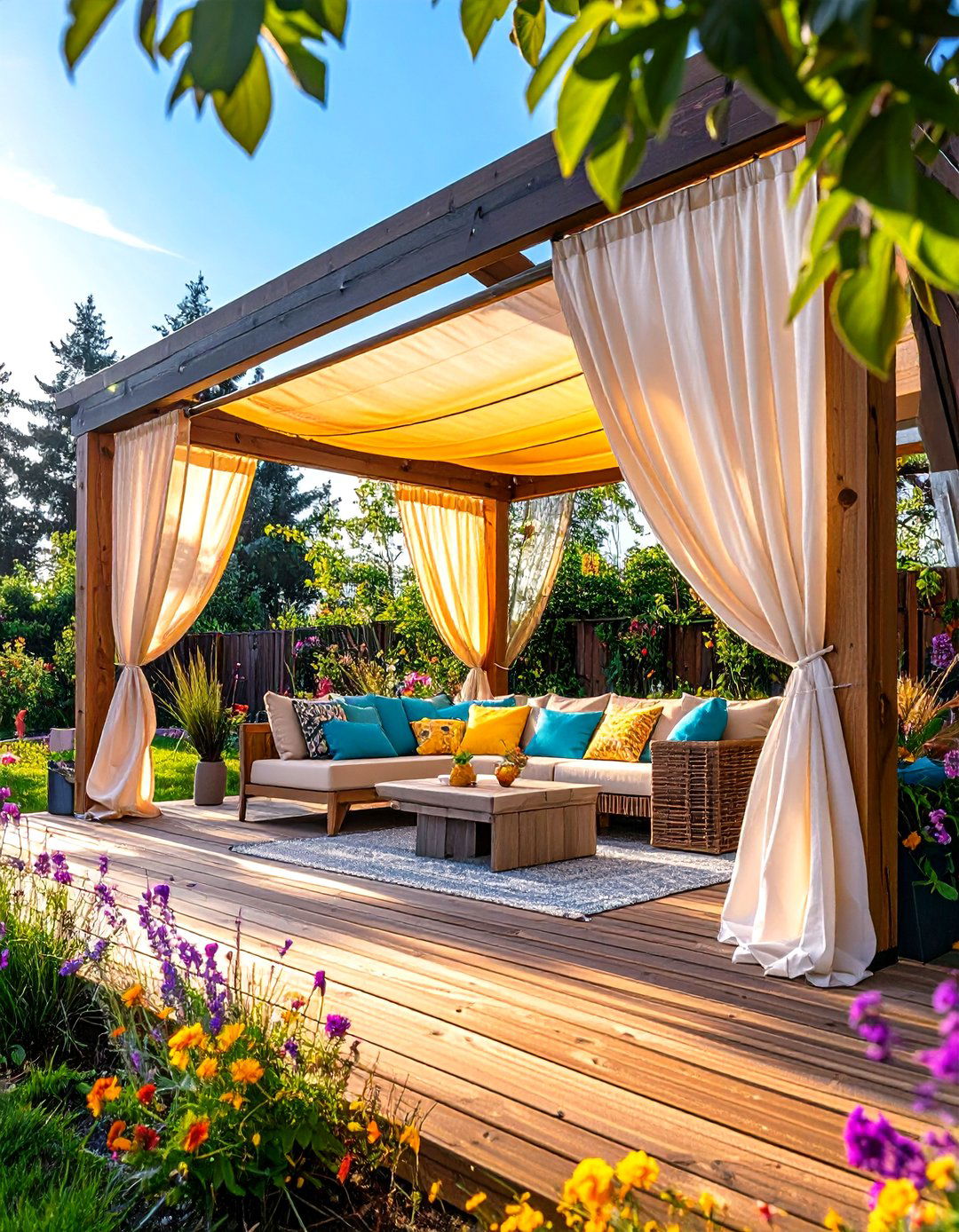
Integrating retractable mesh or canvas screens under a pergola lets you tune privacy on demand. Mount tracks along the beam undersides; when retracted, the screens hide above eye level, leaving your deck wide open. Weather-resistant acrylic fabrics block up to 90 % of UV rays and withstand wind when locked down. Pair screens with a sliding shade canopy overhead for all-round comfort. Ensure the pergola posts are fastened through-bolted to deck joists to handle additional lateral forces.
9. Vertical Garden and Planter Boxes as Natural Barrier
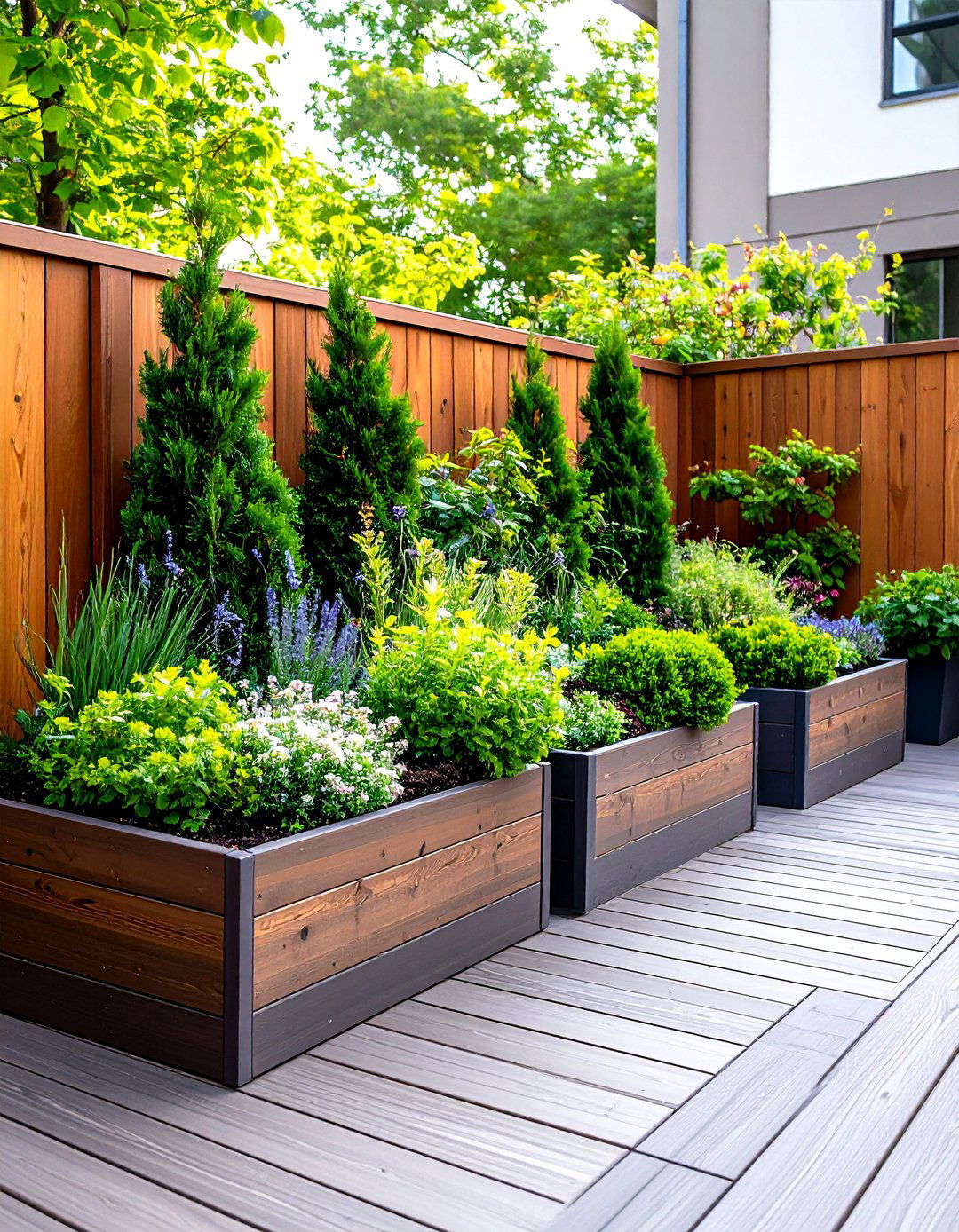
Raised planter boxes bolted to the deck perimeter act as both seating backrests and soil beds for shrubs or dwarf evergreens. By arranging boxes in a staggered pattern, you build a tiered privacy wall whose height grows with the plants. Choose lightweight cellular PVC liners inside cedar frames to reduce moisture damage. Installing drip irrigation on a timer makes maintenance nearly hands-free while ensuring consistent growth for full coverage within a season or two. Better Homes & Gardens
10. Bamboo Reed Screen for a Tropical Vibe
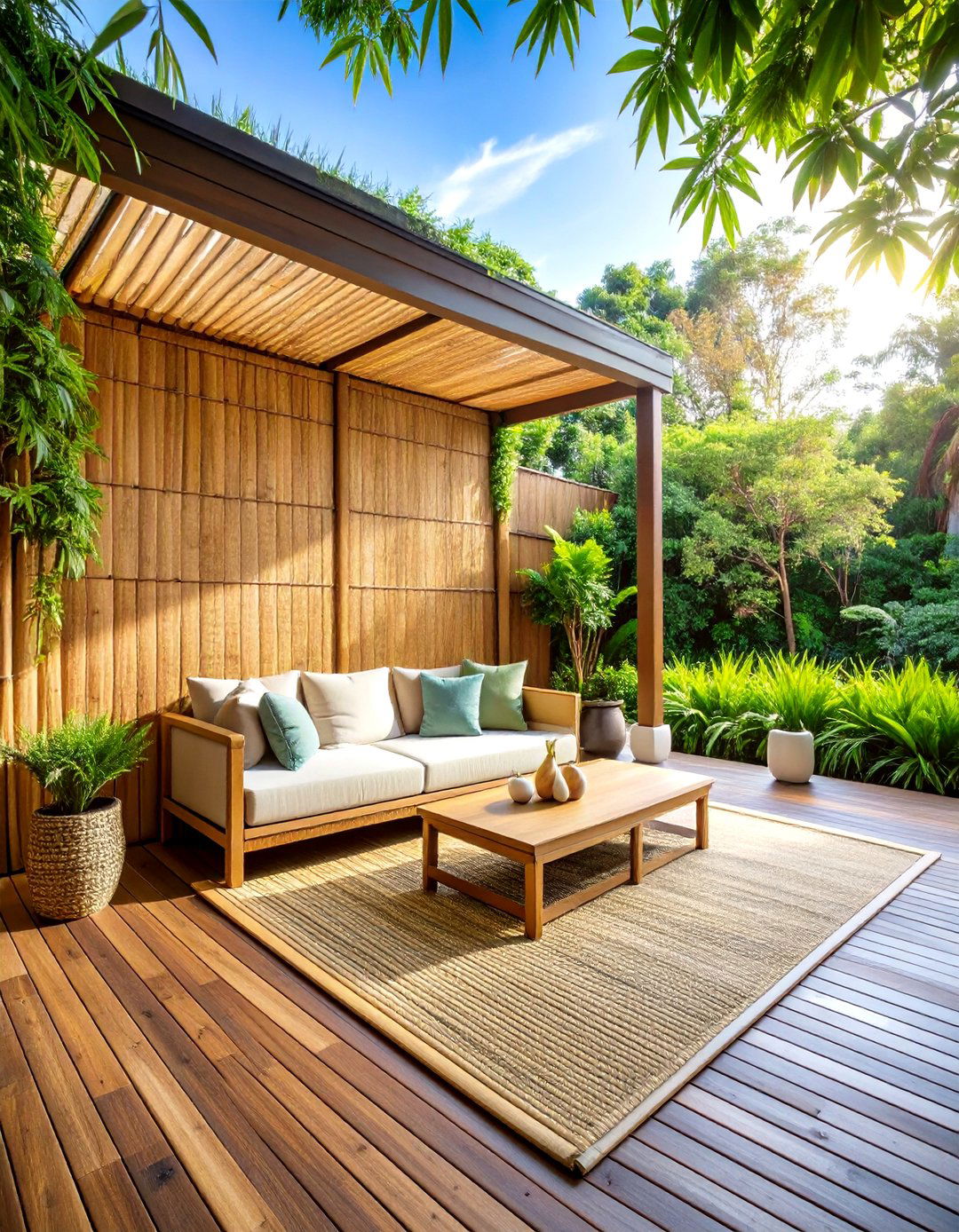
A rolled bamboo reed screen unrolls into instant privacy—no complex carpentry needed. Screw furring strips to your deck posts, then staple the reed matting in place. At roughly 25 lbs per roll, the material exerts minimal load, making it great for balconies. While bamboo naturally resists pests, applying an outdoor polyurethane prolongs its golden hue. For urban settings, select clumping bamboo in planters rather than running varieties to avoid invasiveness while reinforcing the exotic theme. Homebuilding
11. Decorative Laser-Cut Metal Panels as Artful Shield
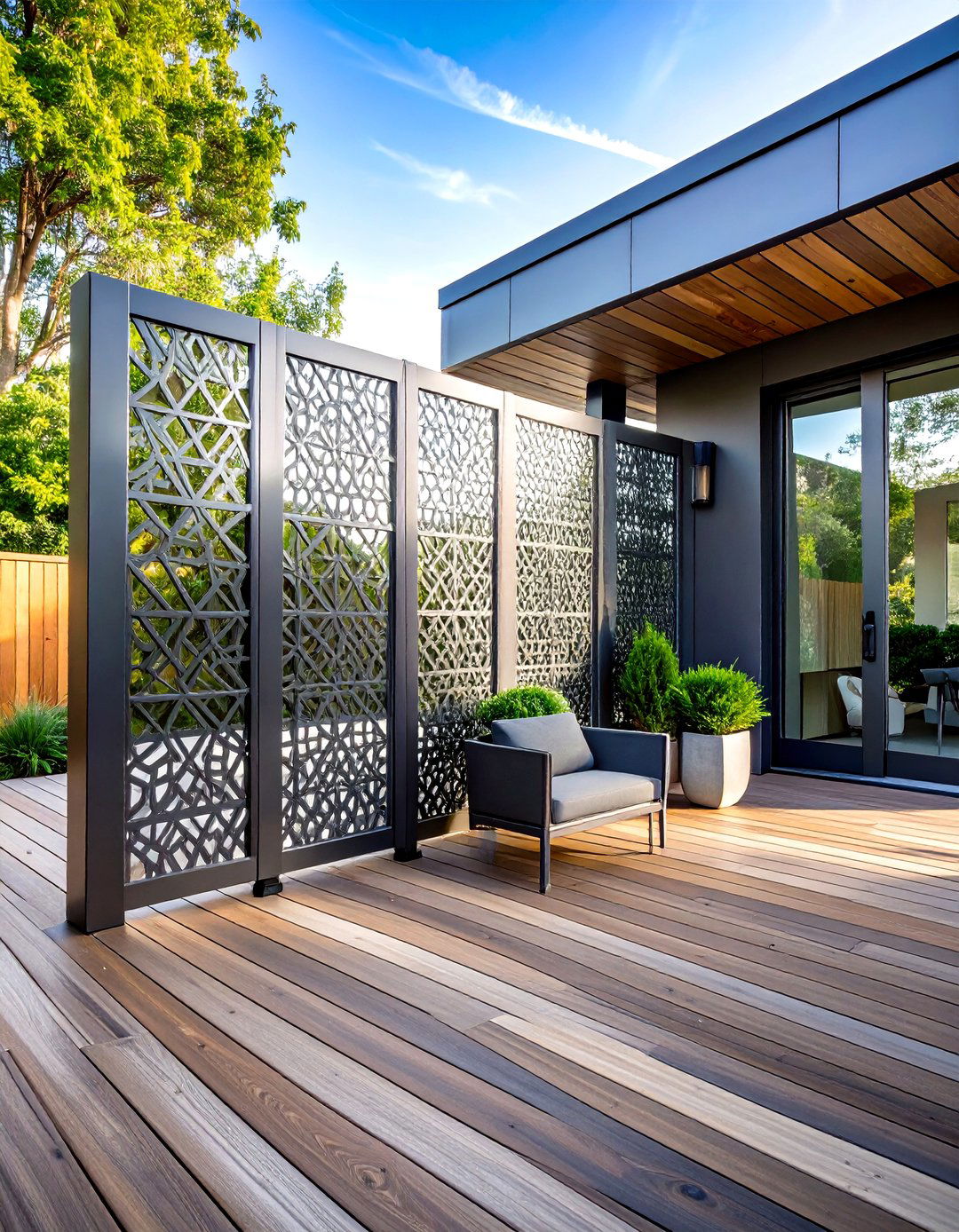
Swap plain boards for powder-coated steel or aluminum panels featuring geometric or nature-inspired cut-outs. These laser-cut sheets attach to steel posts and deliver 60-70 % visual block while casting eye-catching shadows across the deck surface. Opt for marine-grade coatings if you live near saltwater, and specify panels with folded edges to eliminate sharp corners. Many manufacturers offer modular widths, simplifying layout and code compliance. The Deck Store
12. Cable-Rail Top with Solid Bottom Half-Wall
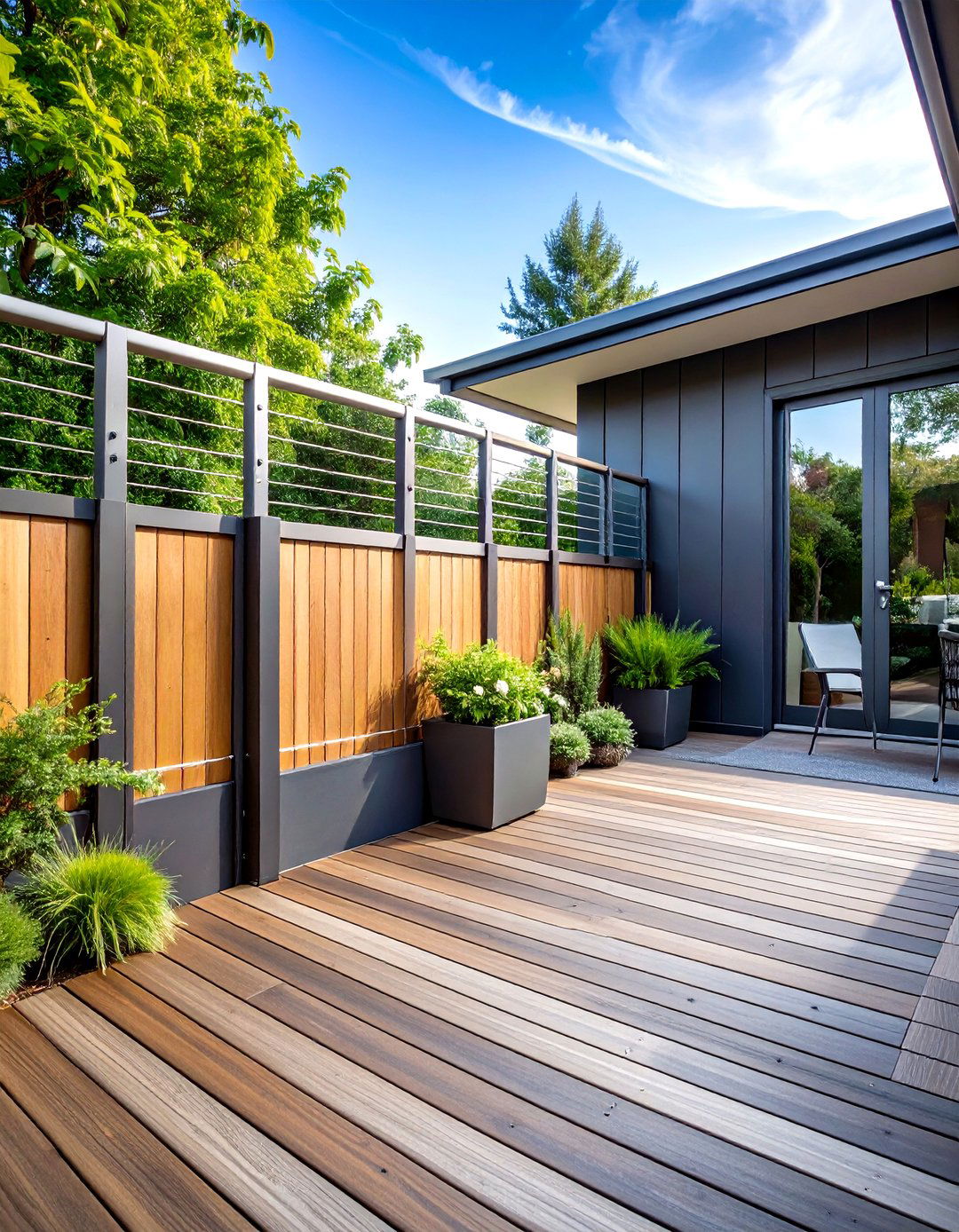
Combine the openness of stainless cable rail on top with a solid privacy wall below hip height. This hybrid keeps seated guests hidden yet preserves views when standing. Frame the lower section with tongue-and-groove boards; install tensioned cables through the upper guard posts at the required 36-inch minimum height for safety. The result is lighter on the eyes—and on the budget—than a full solid wall while still blocking most sight lines. Trex Company, Inc
13. Trellis Privacy Wall Supporting Climbing Vines

A pressure-treated lattice or hog-panel trellis doubles as a framework for climbing roses, jasmine, or clematis, offering fragrance alongside privacy. Set posts 6 feet apart, add a 2×2 frame, and attach welded wire mesh. As vines mature, they weave a dense screen, absorbing heat and creating dappled shade. Leave a 2-inch air gap between trellis and deck-edge joist to promote airflow and minimize mildew on wood surfaces. The Spruce
14. Built-In Bench Backrest Privacy Wall Duo
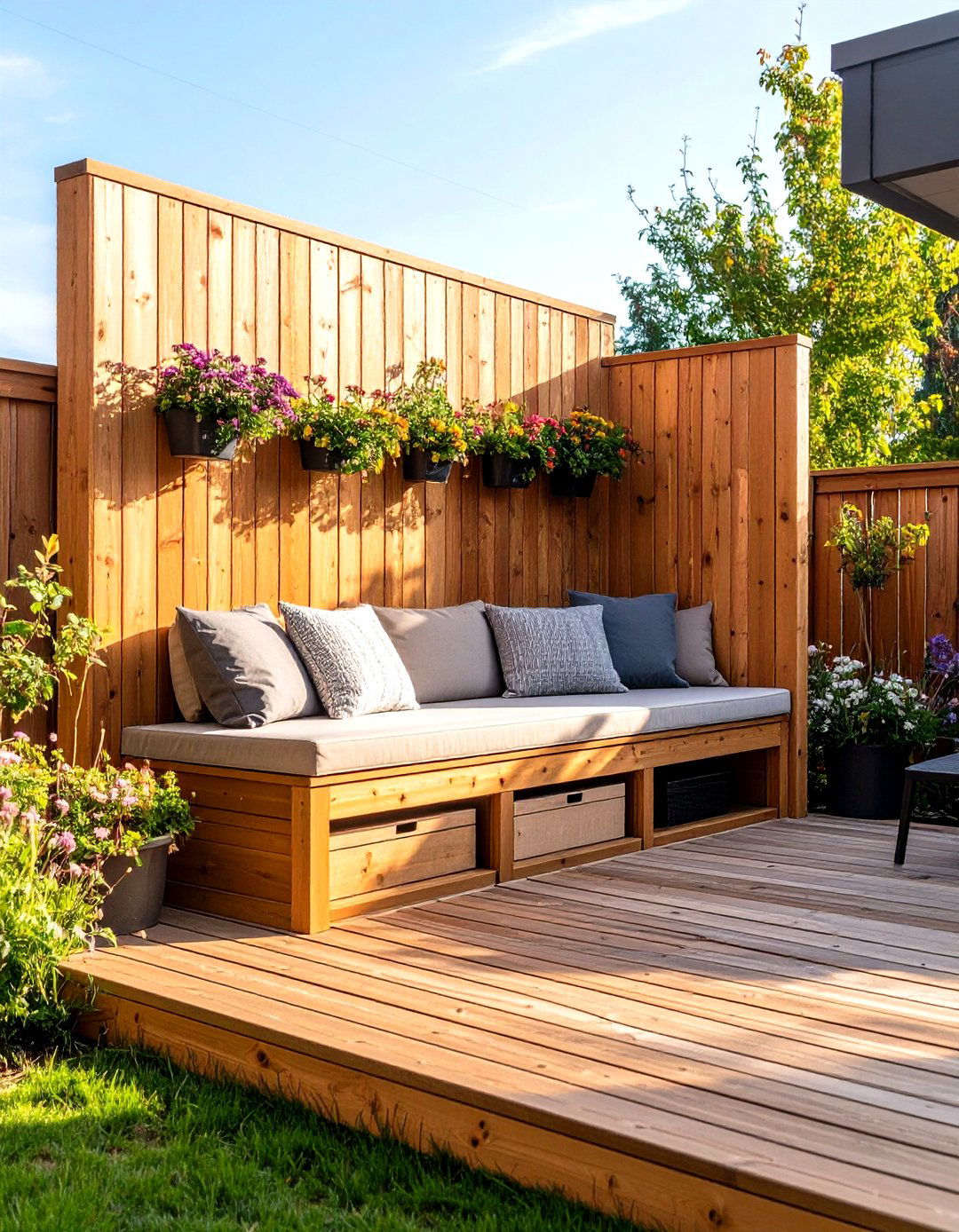
Turn the backrest of a deck bench into a functional privacy wall by extending it to five or six feet. Use 2×6 framing to create a boxed bench seat with storage below; continue uprights upward, then sheath with shiplap boards. This two-in-one solution saves floor space on narrow decks and provides extra seating for gatherings. Gas-strut lids keep the storage compartment user-friendly. Add weatherproof cushions to invite long lounging sessions.
15. Movable Privacy Panels on a Track System
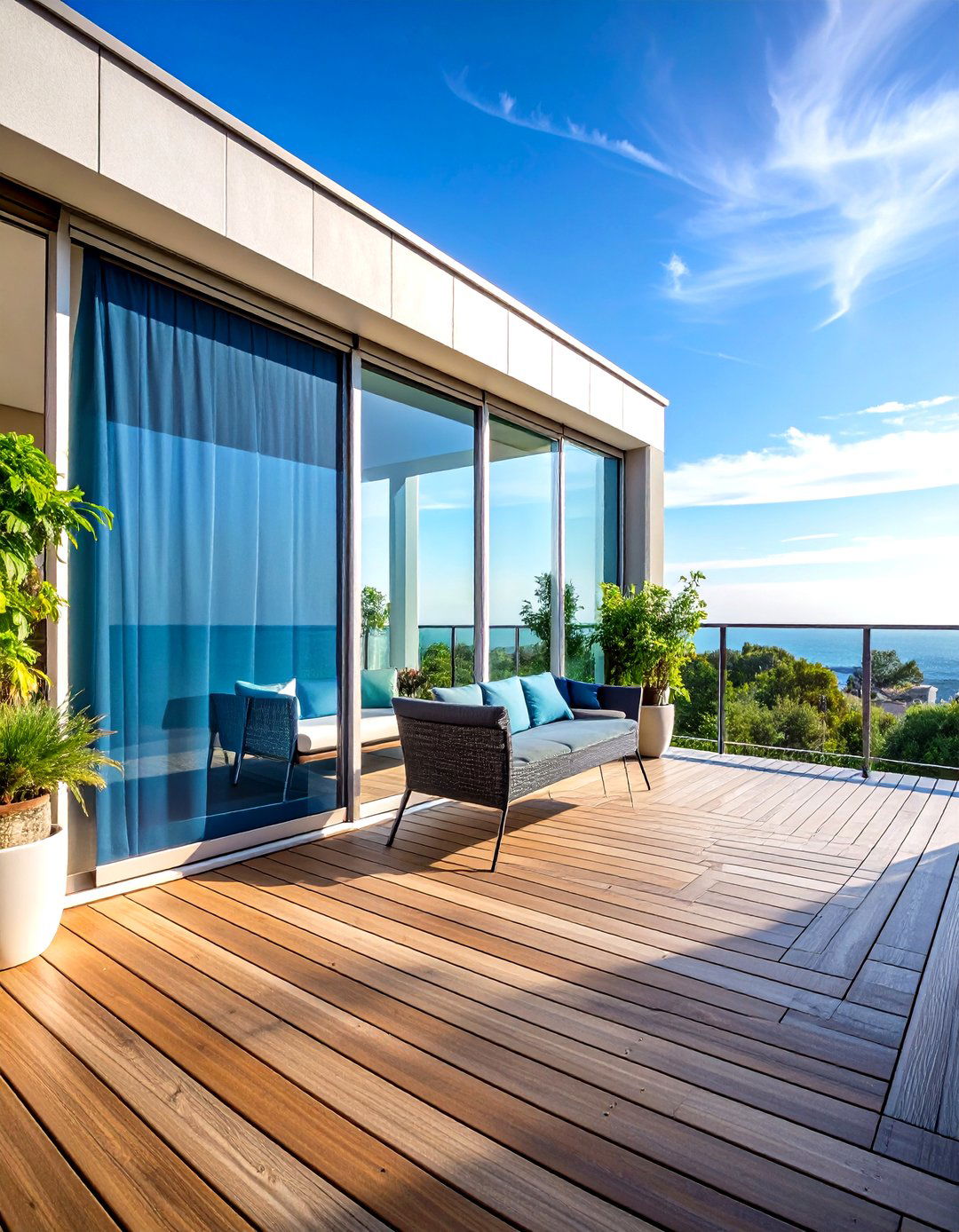
Sliding barn-door-style panels let you reconfigure privacy as sun angles and party sizes change. Mount stainless steel tracks to pergola beams or freestanding headers; hang composite or lightweight aluminum screens using wheeled trolleys. Because panels stack behind each other, you reclaim open views when desired. Choose weather-sealed bearings for smooth operation year-round, and include a floor guide pin to resist wind sway.
16. Privacy Wall with Integrated Lighting Accents

Add low-voltage LED strip lighting or recessed uplights within your deck privacy wall to extend usability into evening hours. Route wiring through PVC conduits before closing the wall, keeping transformers under the deck for easy access. Lighting not only sets the mood but also highlights textures—think warm cedar tones or elaborate metal patterns—creating depth after dark. Ensure fixtures are listed for damp locations and tie them to a photocell or smart switch. Rocky Mountain Forest Products
17. Sound-Dampening Acoustic Privacy Wall Solutions
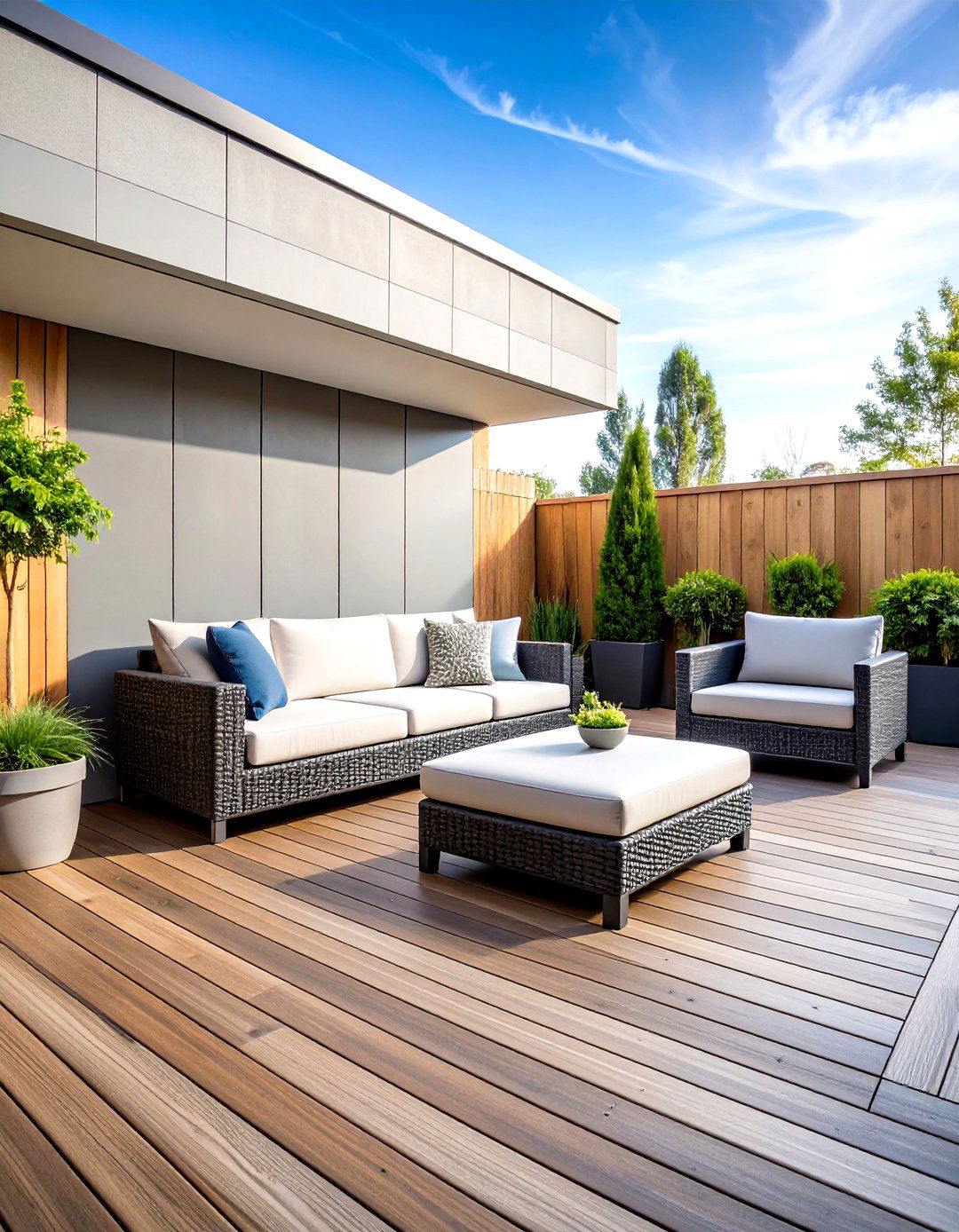
Urban decks can reclaim tranquility with acoustic privacy walls built from mass-loaded vinyl sandwiched between plywood skins, then finished in weather-resistant cladding. This assembly blocks traffic noise far better than standard lumber alone. Cap the top edge with aluminum flashing to shed water and prolong material life. Pair with dense shrubs in planters to further break up sound waves while adding greenery. Outdoor Space Designs
18. Privacy Wall That Doubles as Outdoor Bar
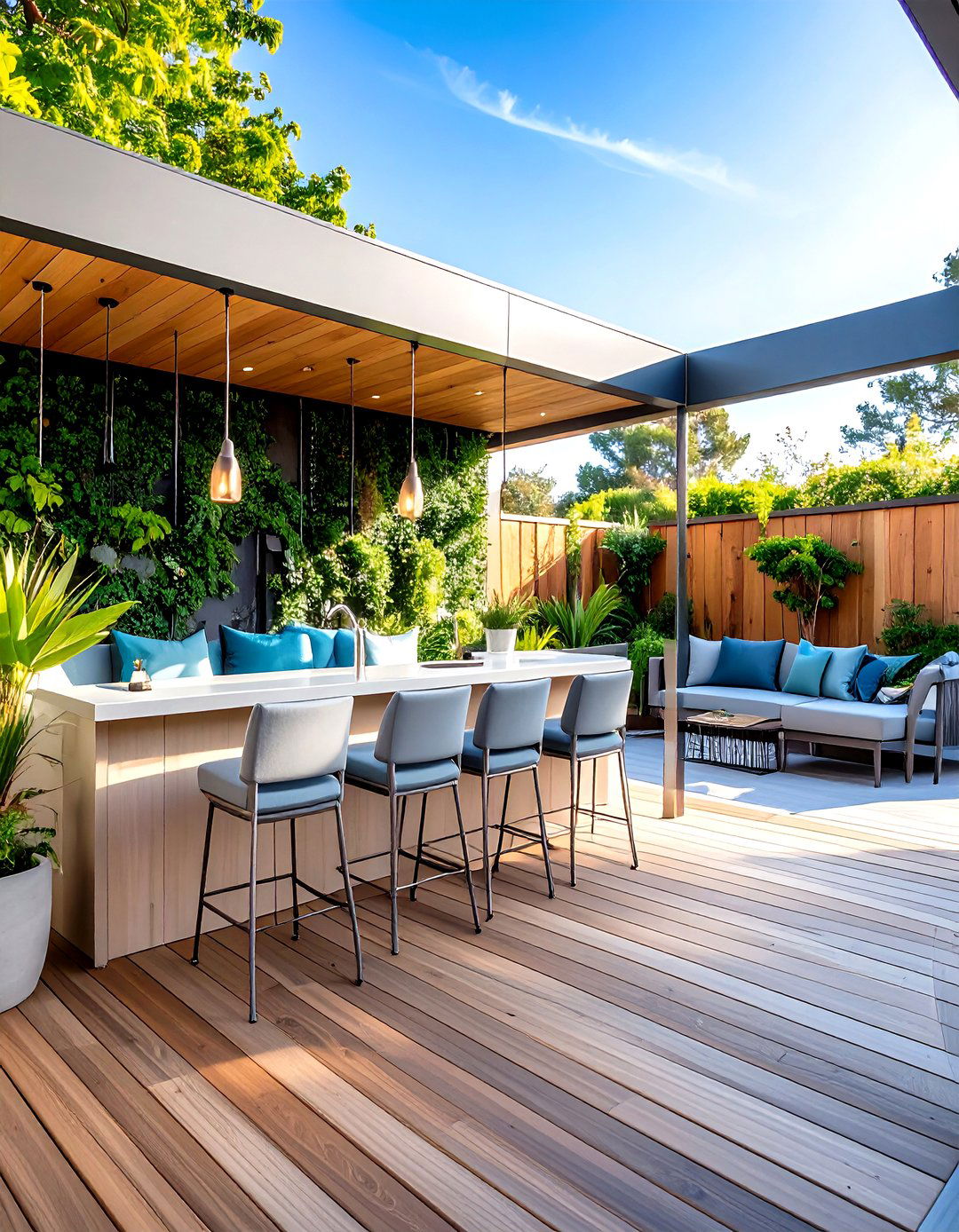
Elevated entertaining meets seclusion when a deck privacy wall incorporates a flip-down bar ledge. Install heavy-duty piano hinges on a framed plywood panel finished with tile or composite fascia. When closed, the panel completes the wall; when down, stainless steel cables support drink service. Add recessed cubbies inside the wall for bottles and glassware, and seal everything with marine varnish for moisture control. Rocky Mountain Forest Products
19. Solar Panel Privacy Wall Generating Power
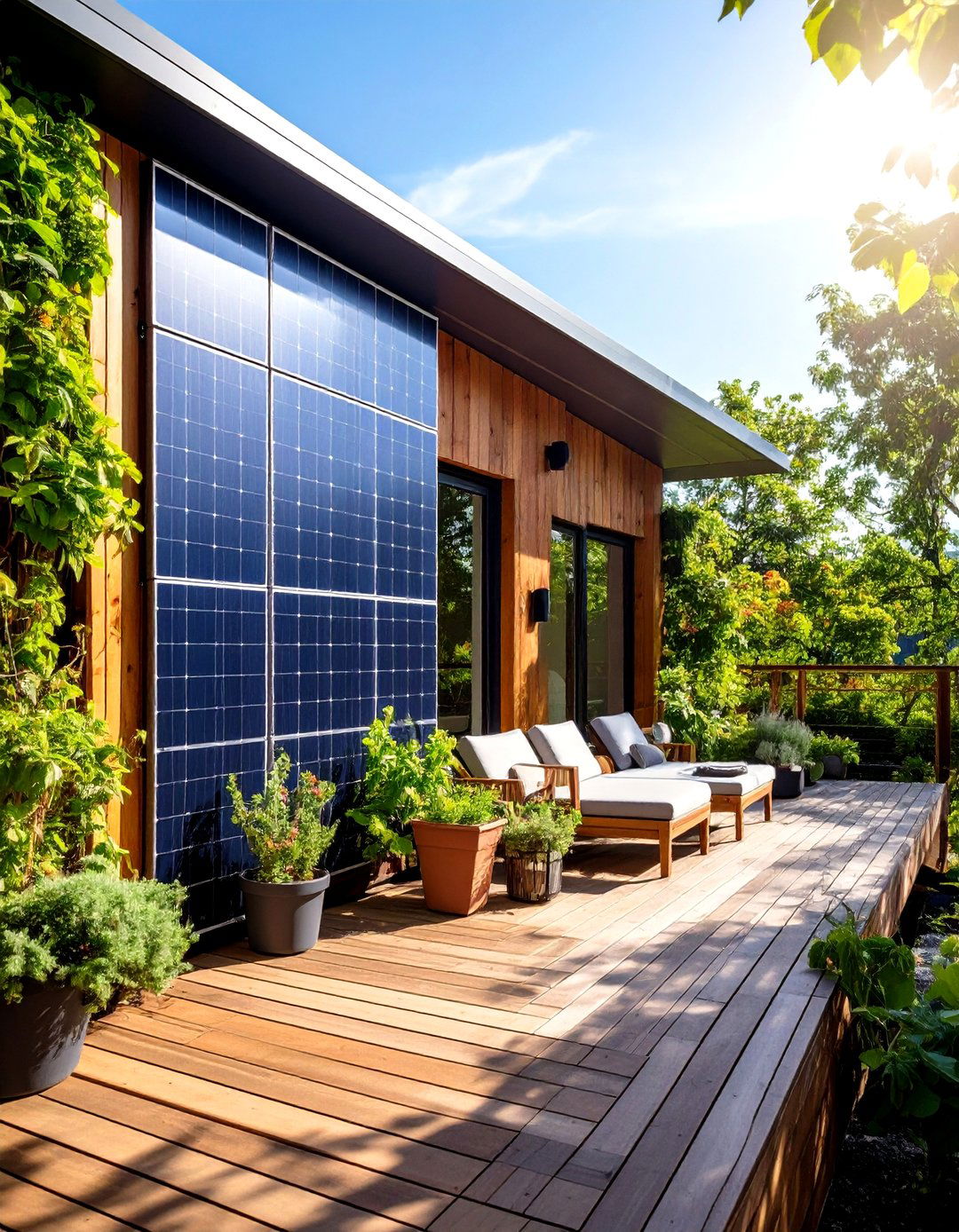
Tilted photovoltaic panels mounted vertically can serve as a solid privacy wall while producing clean energy to run deck lighting or charge devices. Use bifacial panels to catch reflected light from the deck surface and boost output. Secure each module to an aluminum rail system rated for wind load at your local height, and wire through a micro-inverter for easy expansion. Check with local code officials for electrical and structural permitting before installation.
20. DIY Modular Privacy Wall Kits for Easy Install
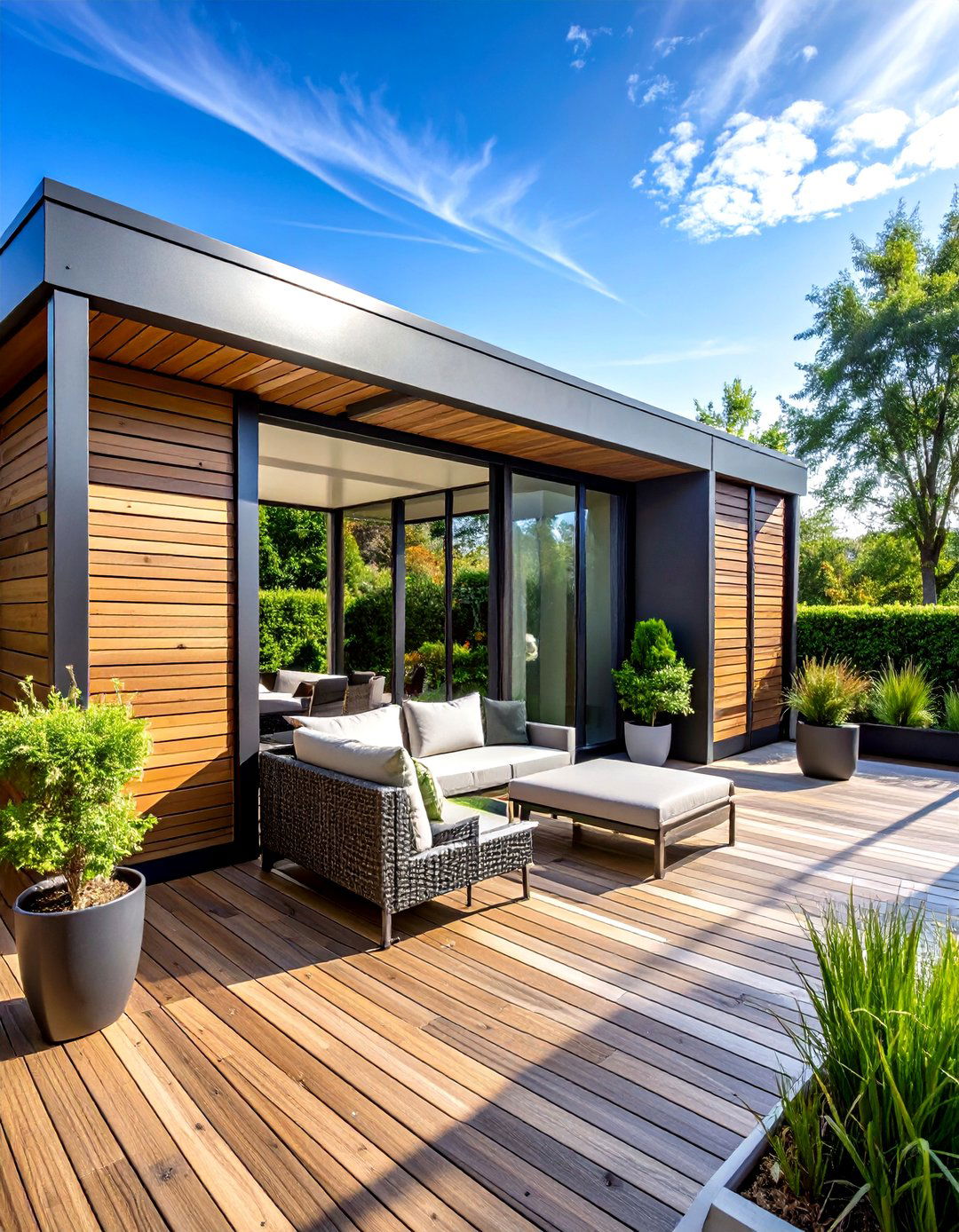
When time is tight, modular privacy wall kits offer pre-cut aluminum frames and interchangeable infill options—wood-look composites, laser-cut screens, or frosted acrylic. Panels lock into vertical channels, meaning no specialty carpentry skills are required. Home-improvement centers increasingly stock these kits thanks to surging demand for quick deck upgrades. Measure your railing span, order appropriate widths, and expect a two-person weekend install. Deckorators
Conclusion:
Thoughtful deck privacy walls turn exposed platforms into personalized sanctuaries, blending style, comfort, and compliance with modern building codes. From airy cedar slats to energy-generating solar panels, each option leverages smart materials and design trends to shield your space while amplifying its charm. Pick the concept that matches your maintenance tolerance, aesthetic goals, and climate, then enjoy a deck that feels both open to the sky and safely tucked away from the world outside.



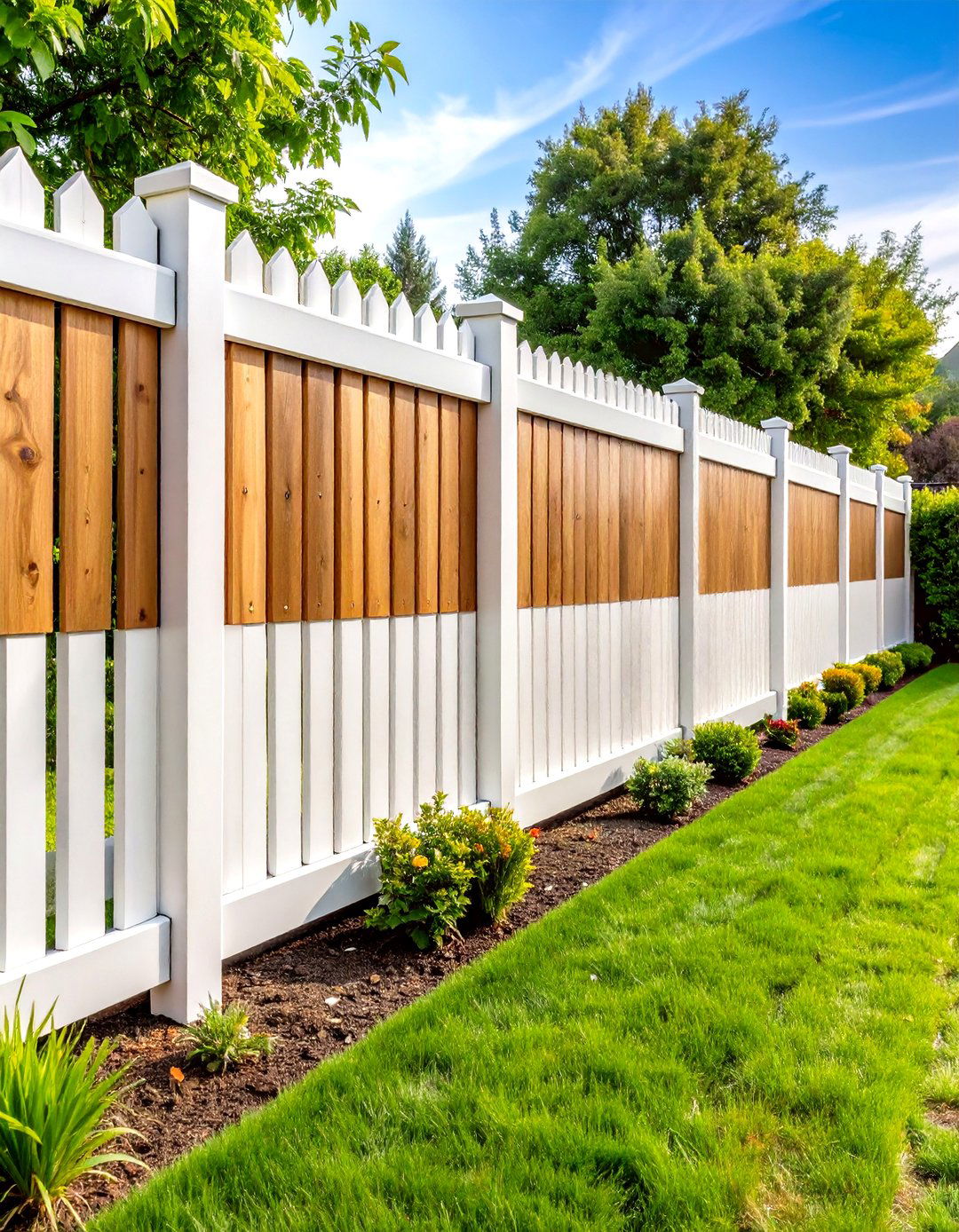
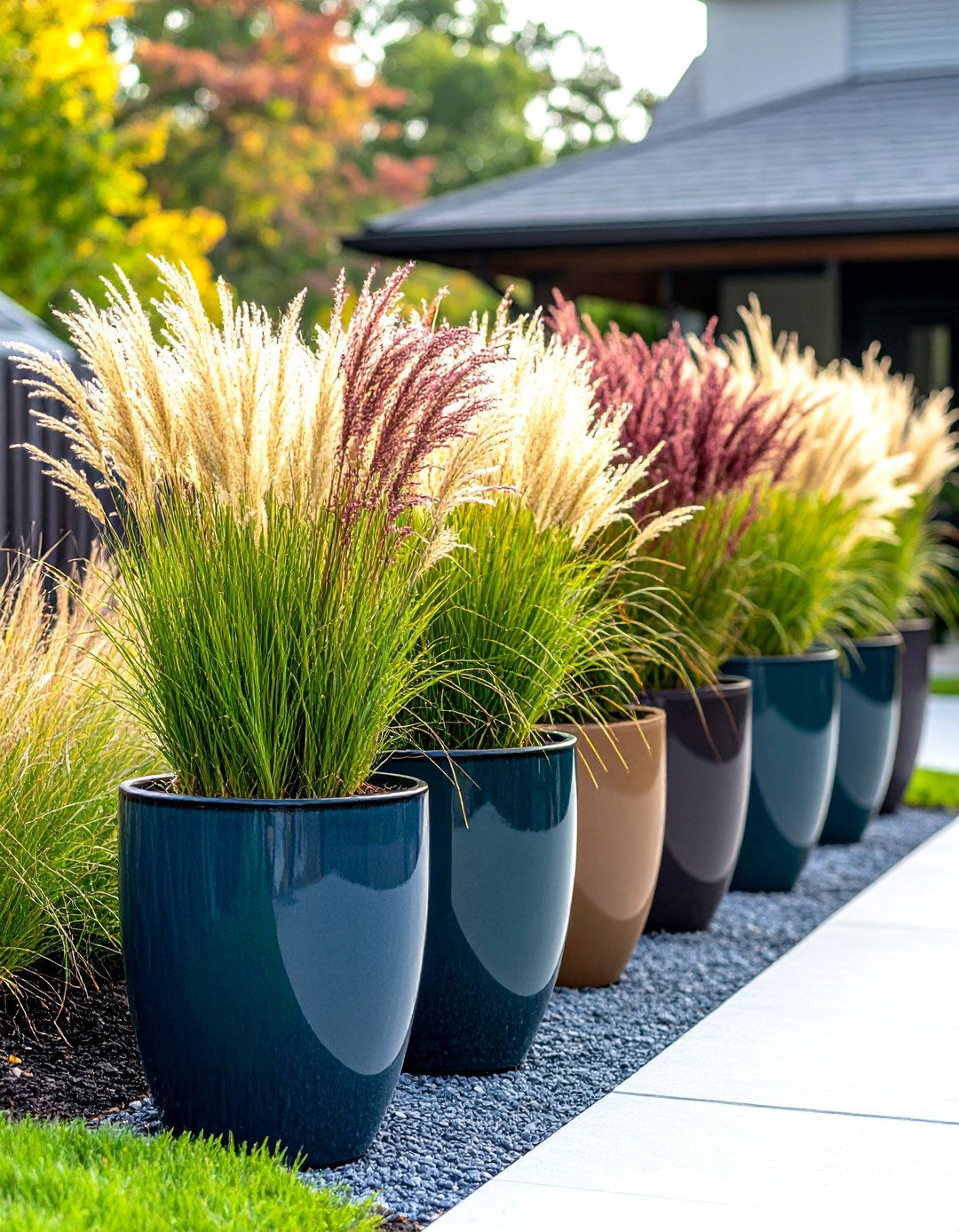
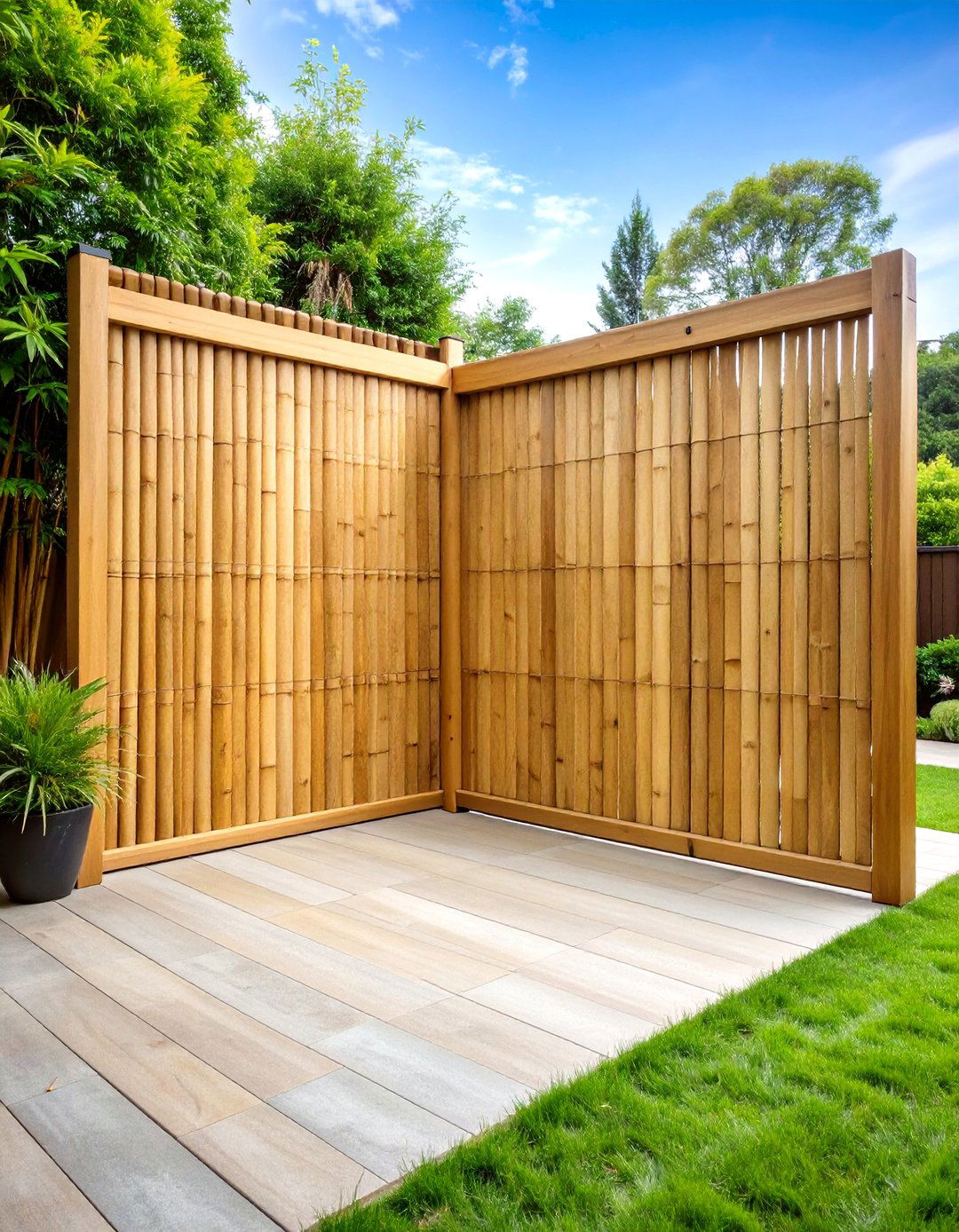
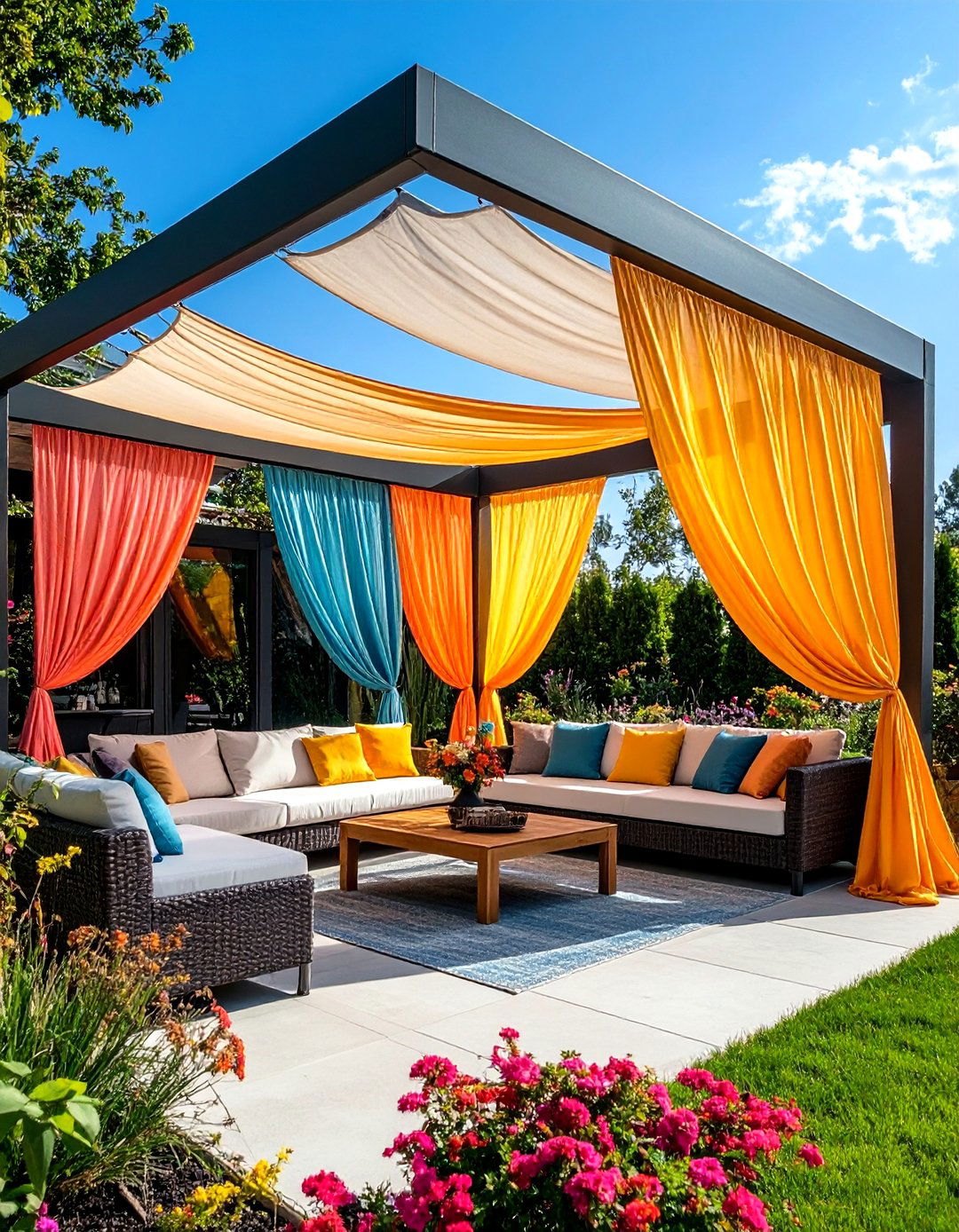
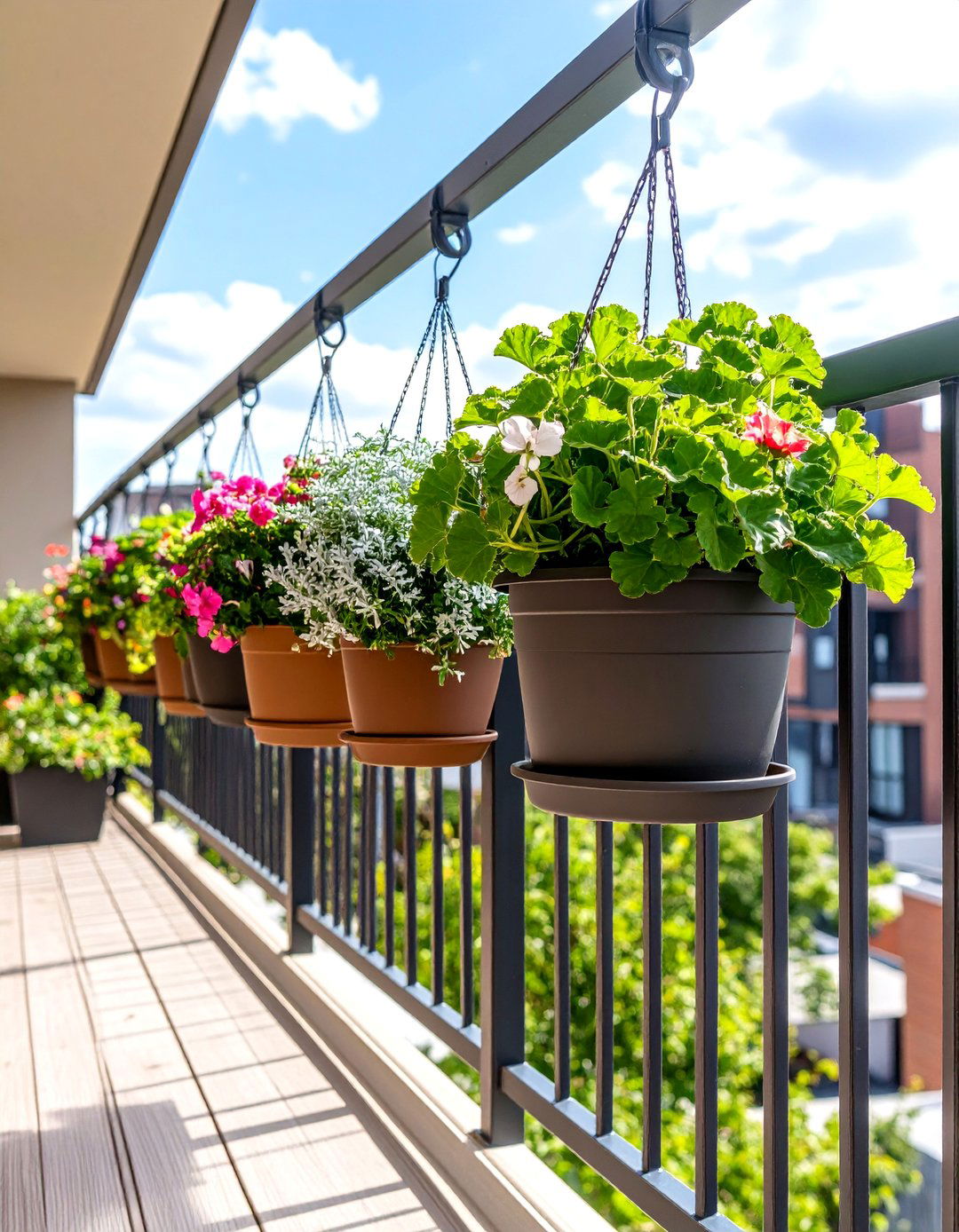
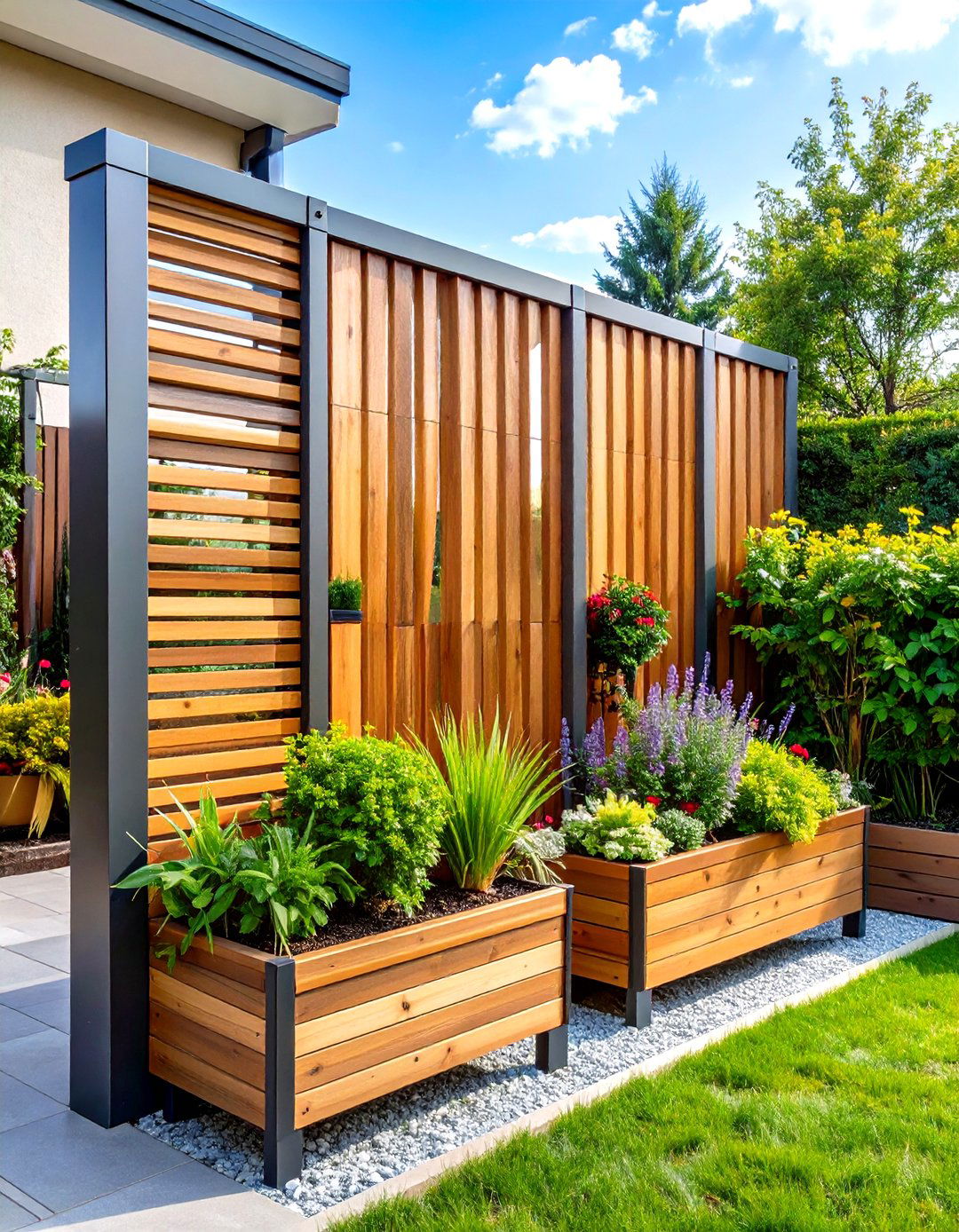
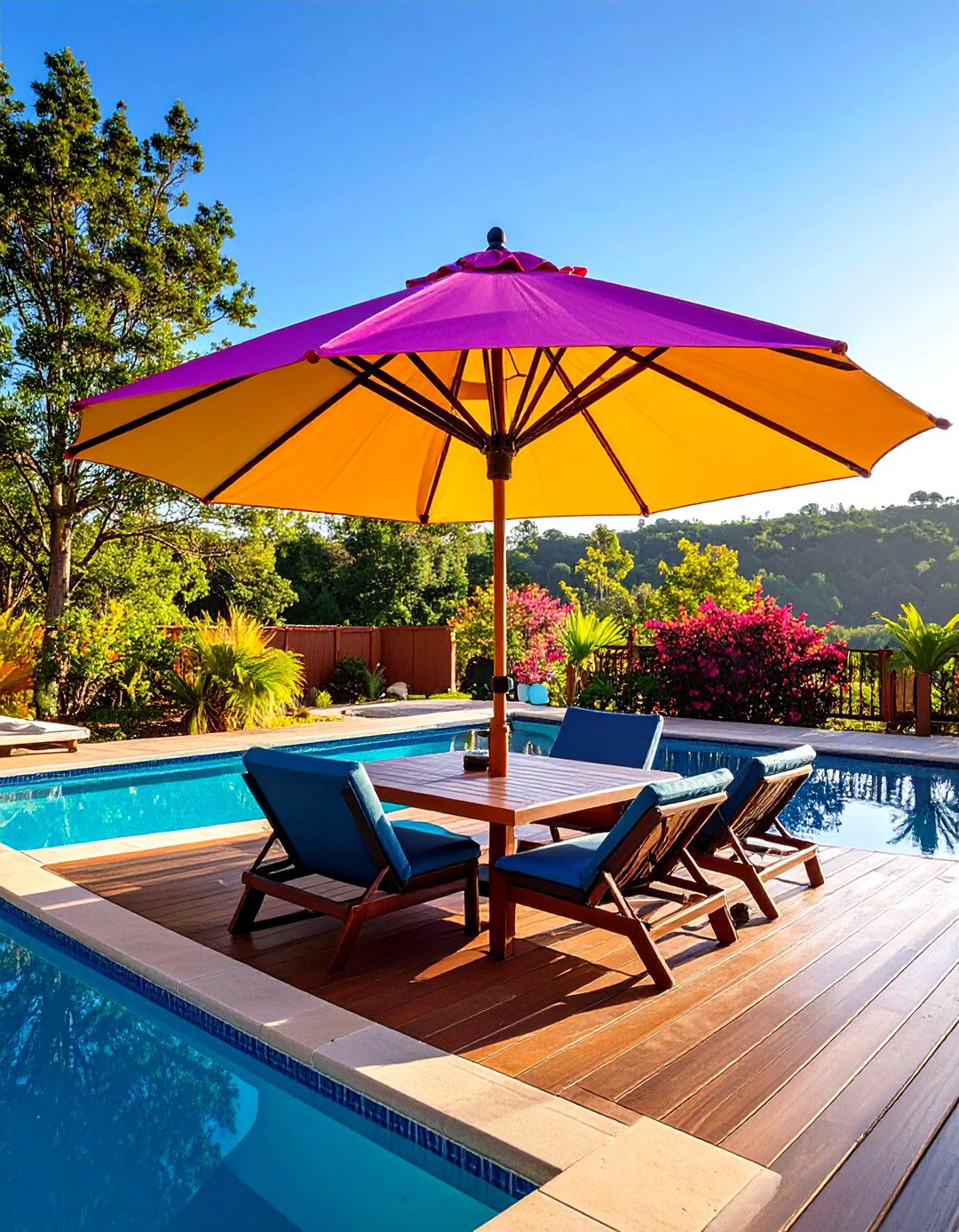
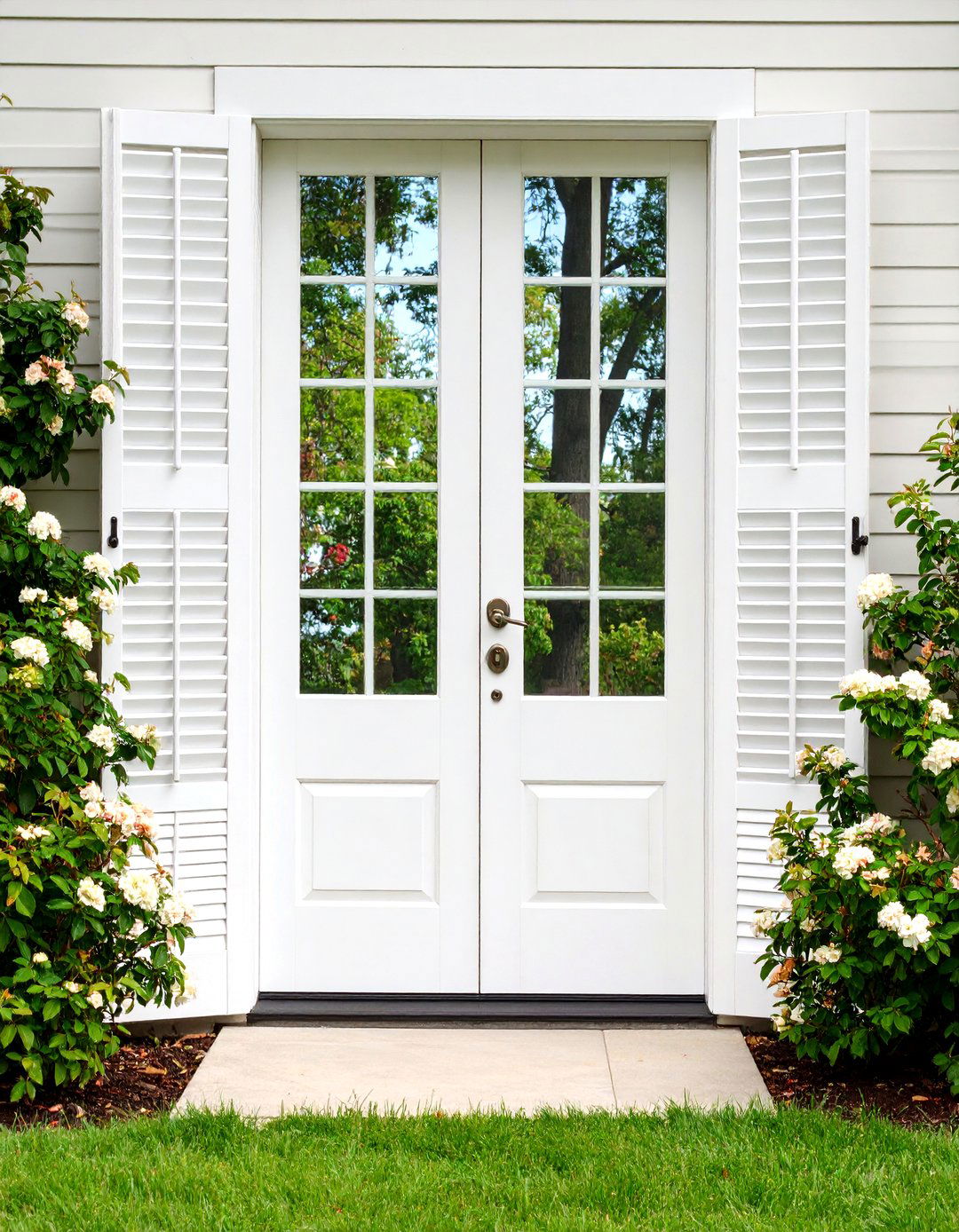
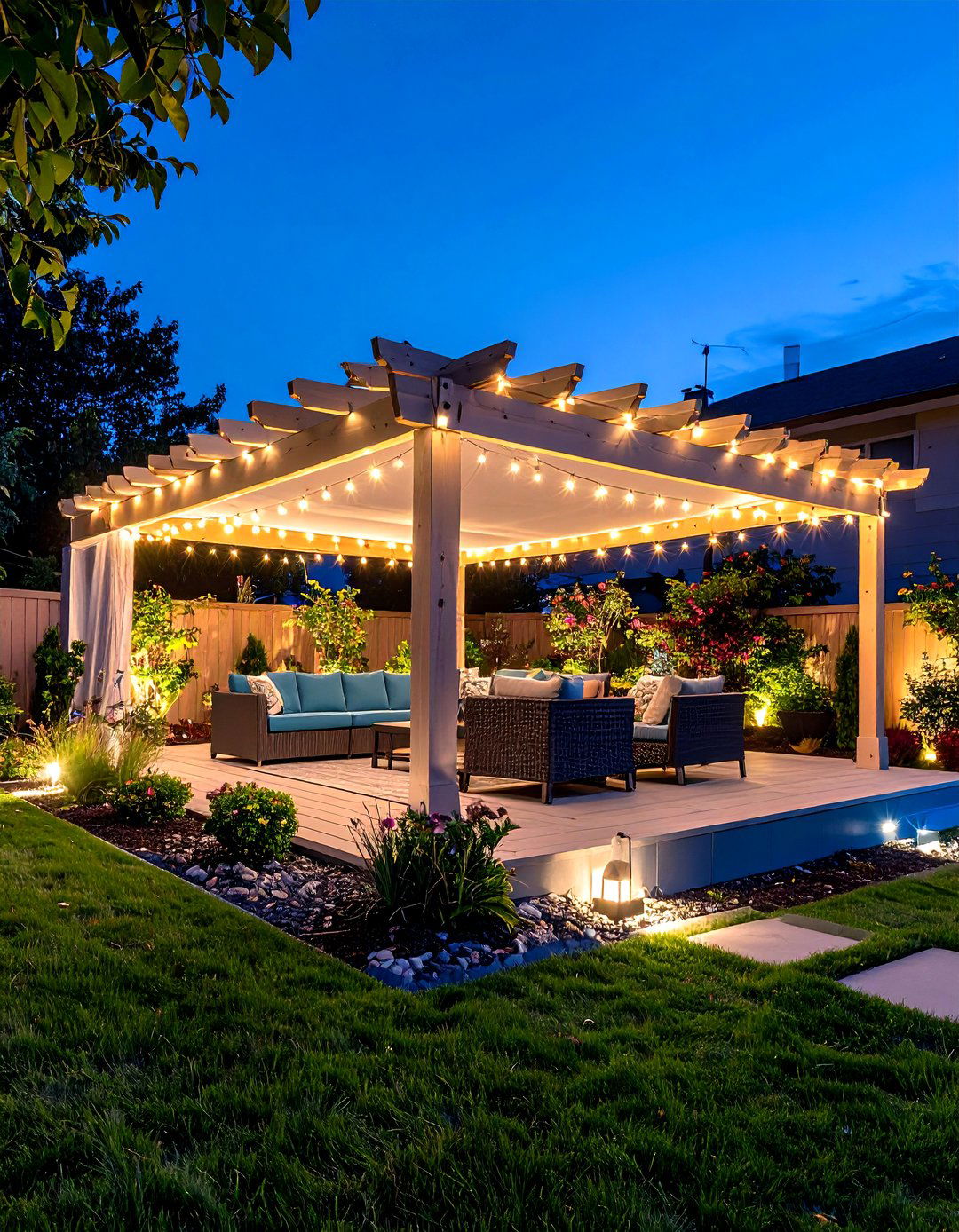
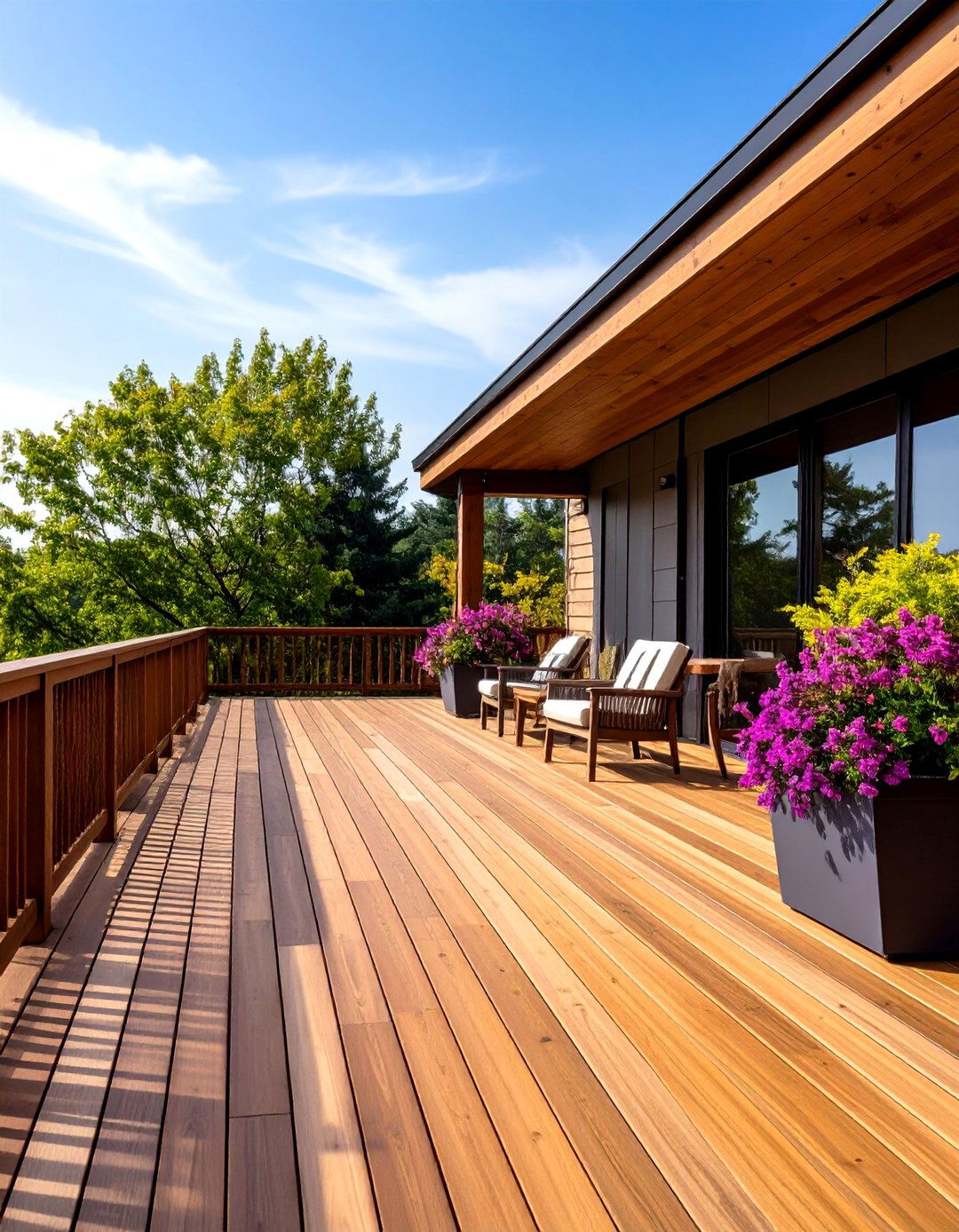
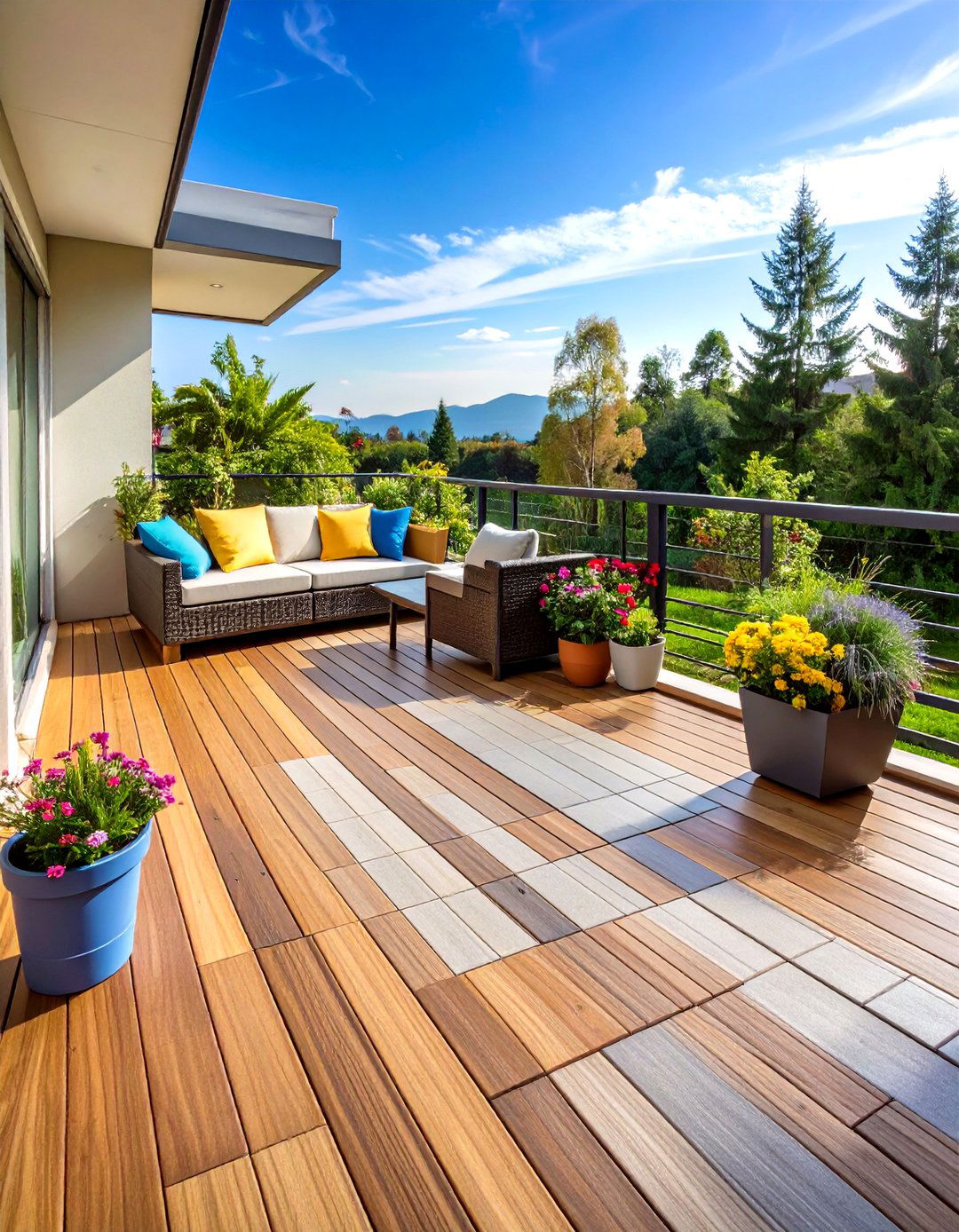

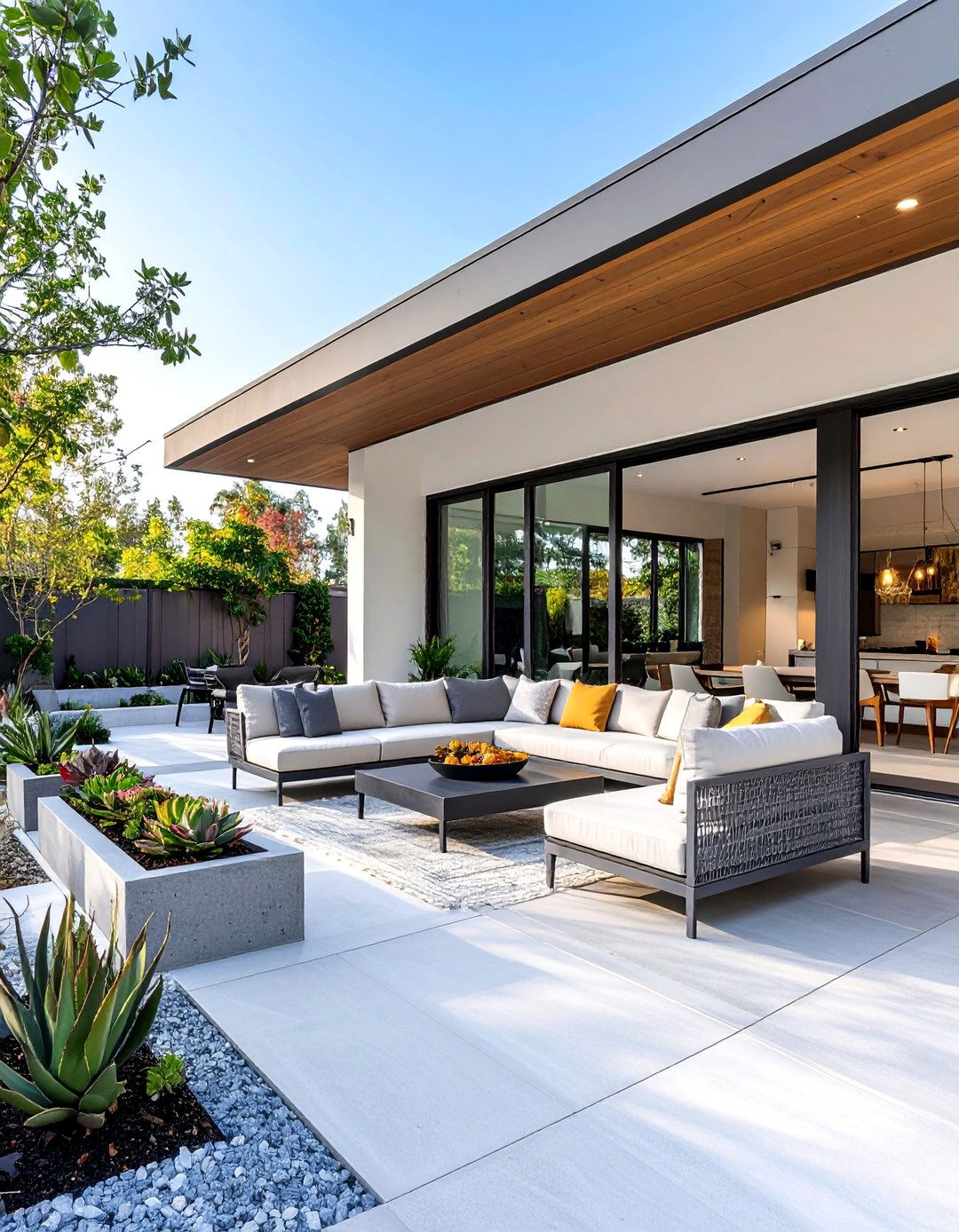
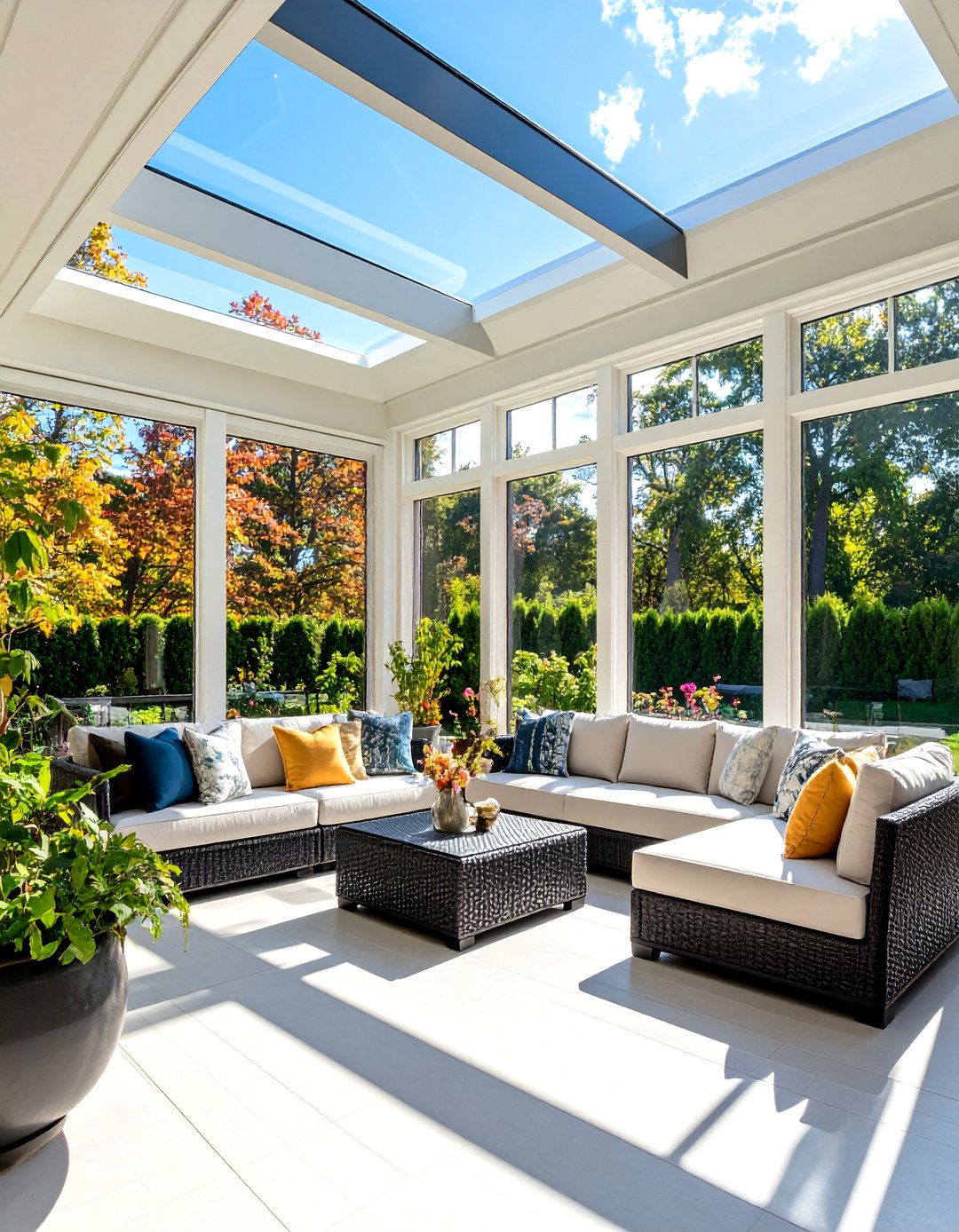
Leave a Reply